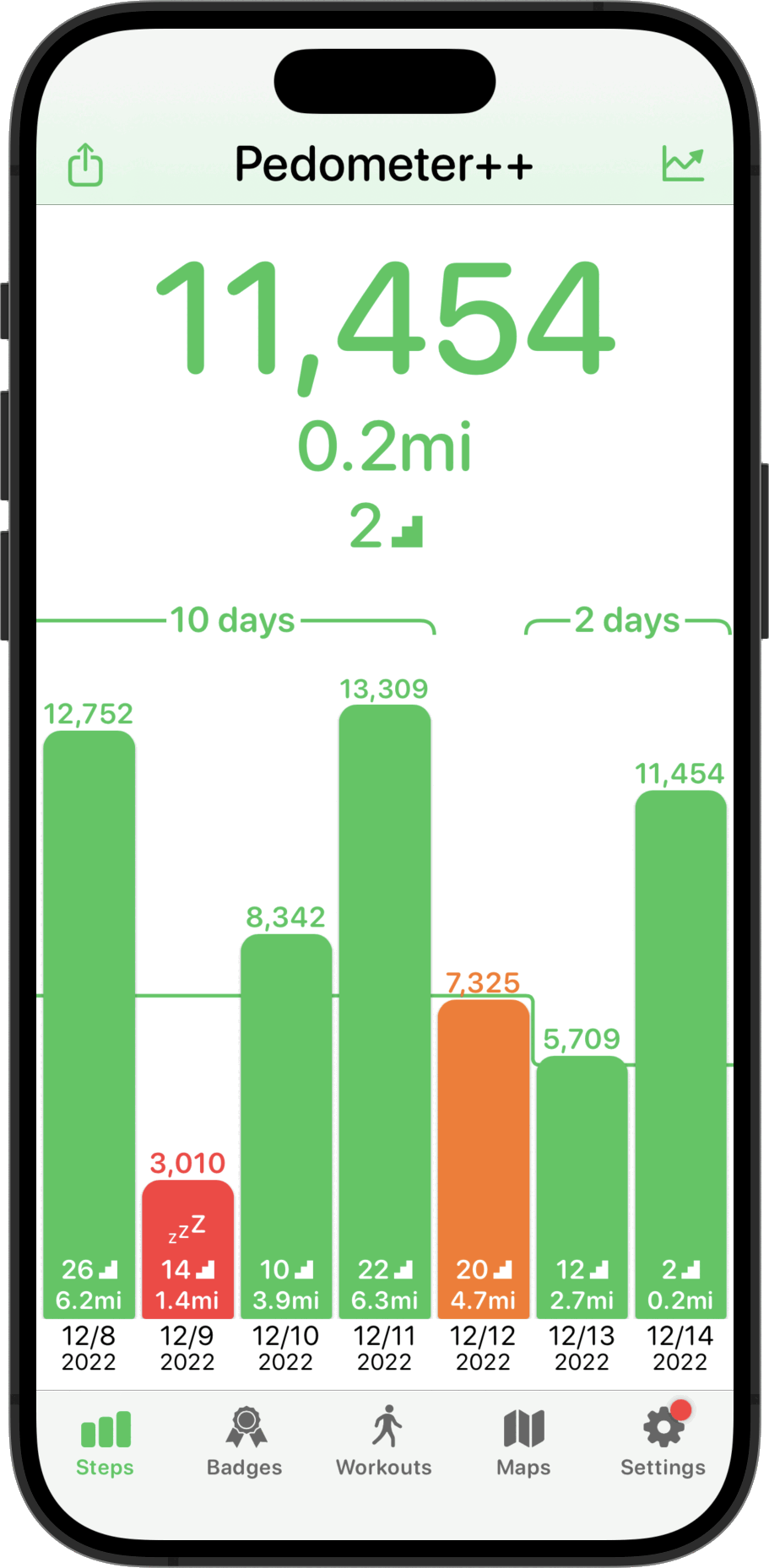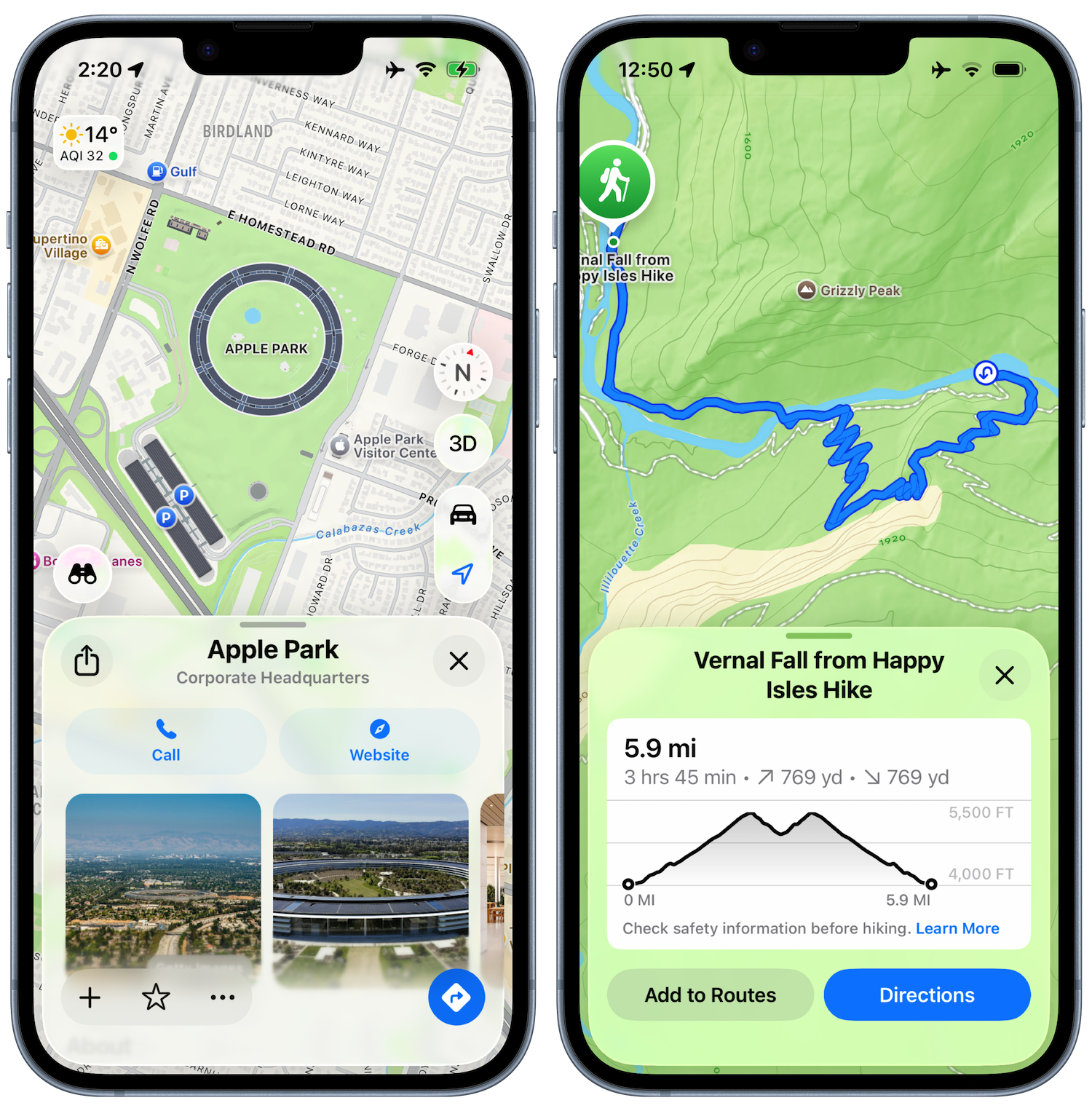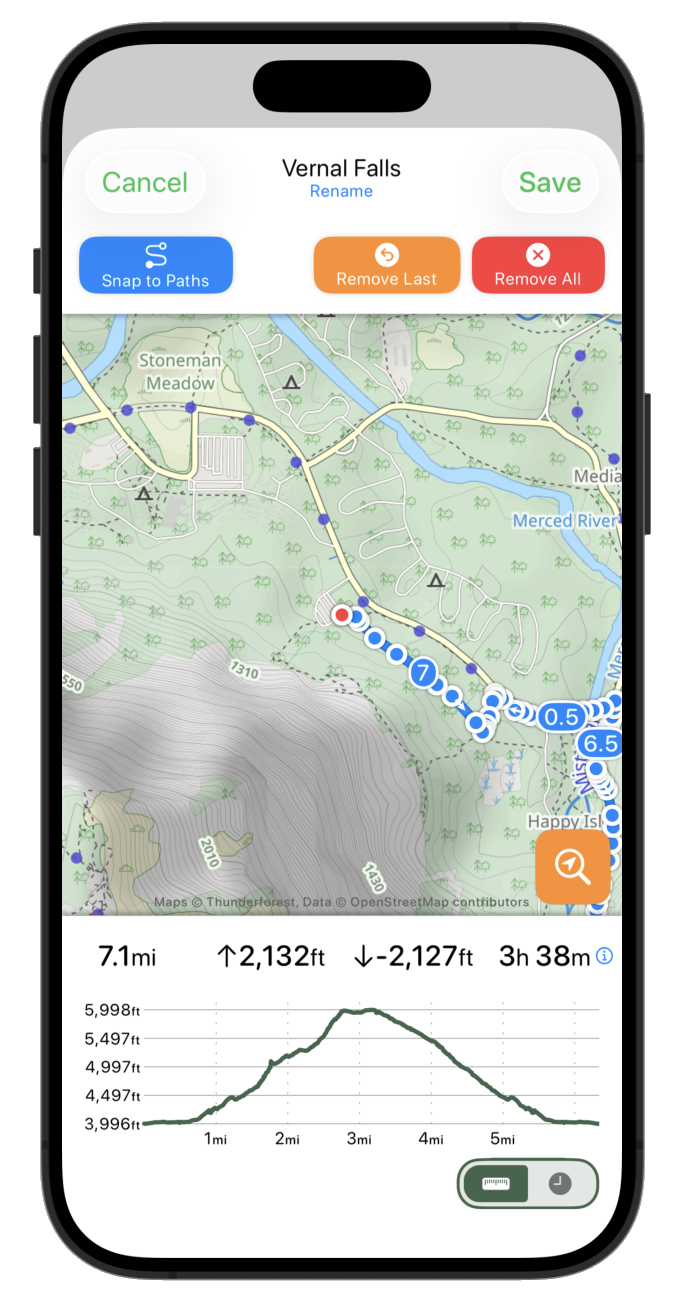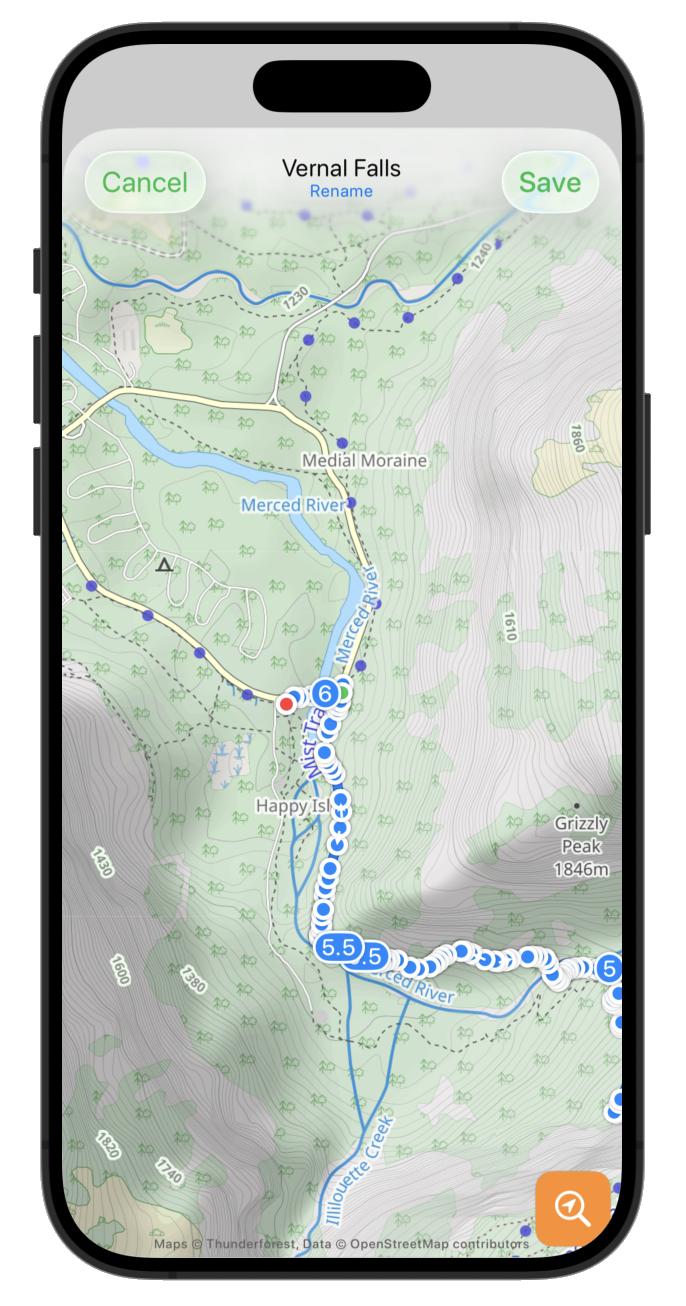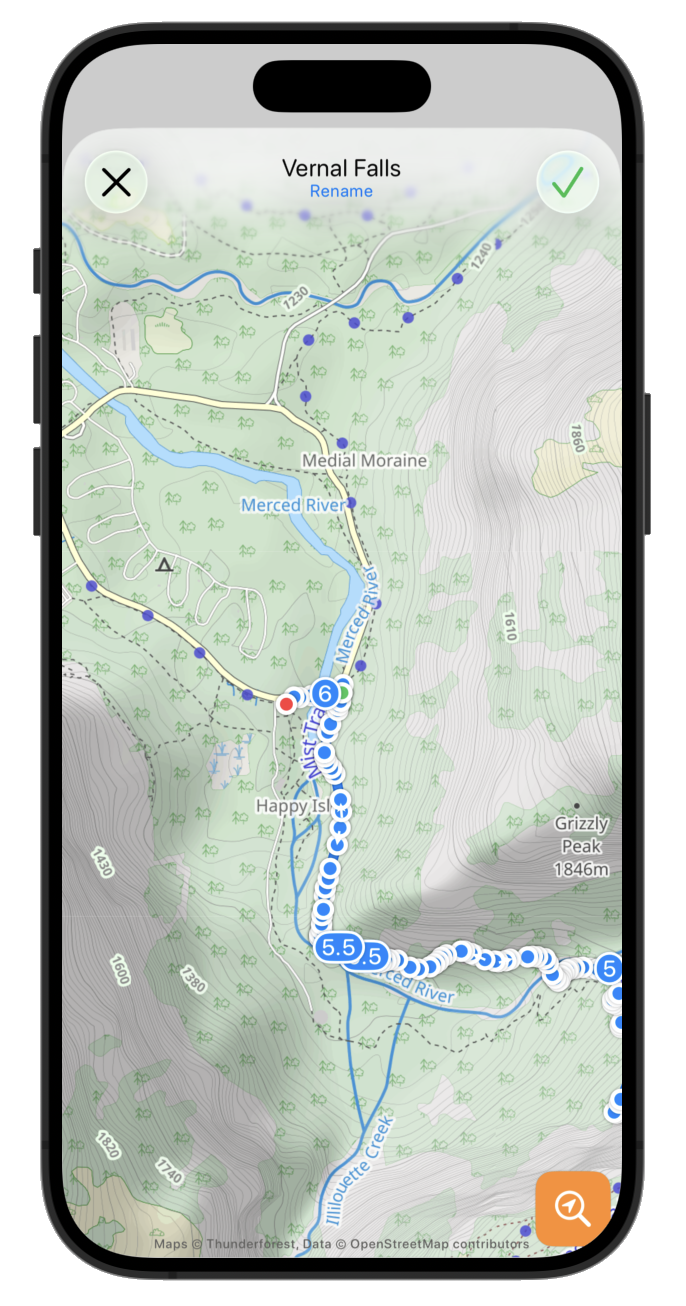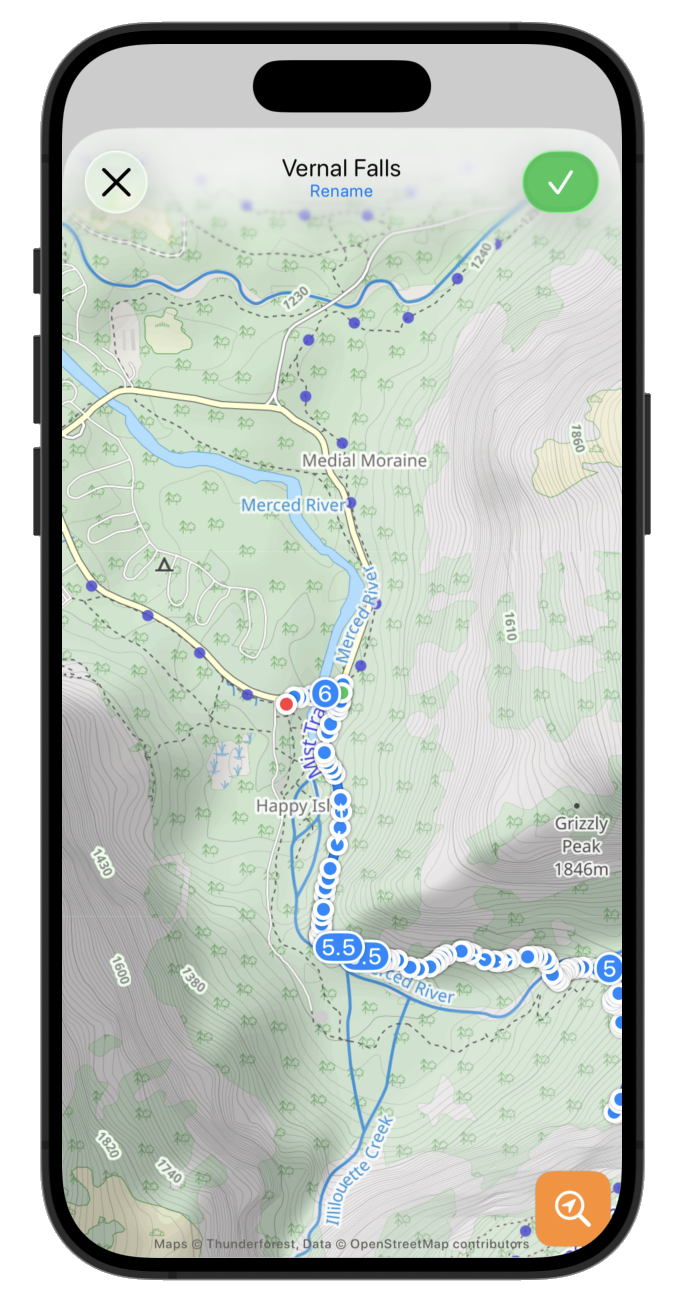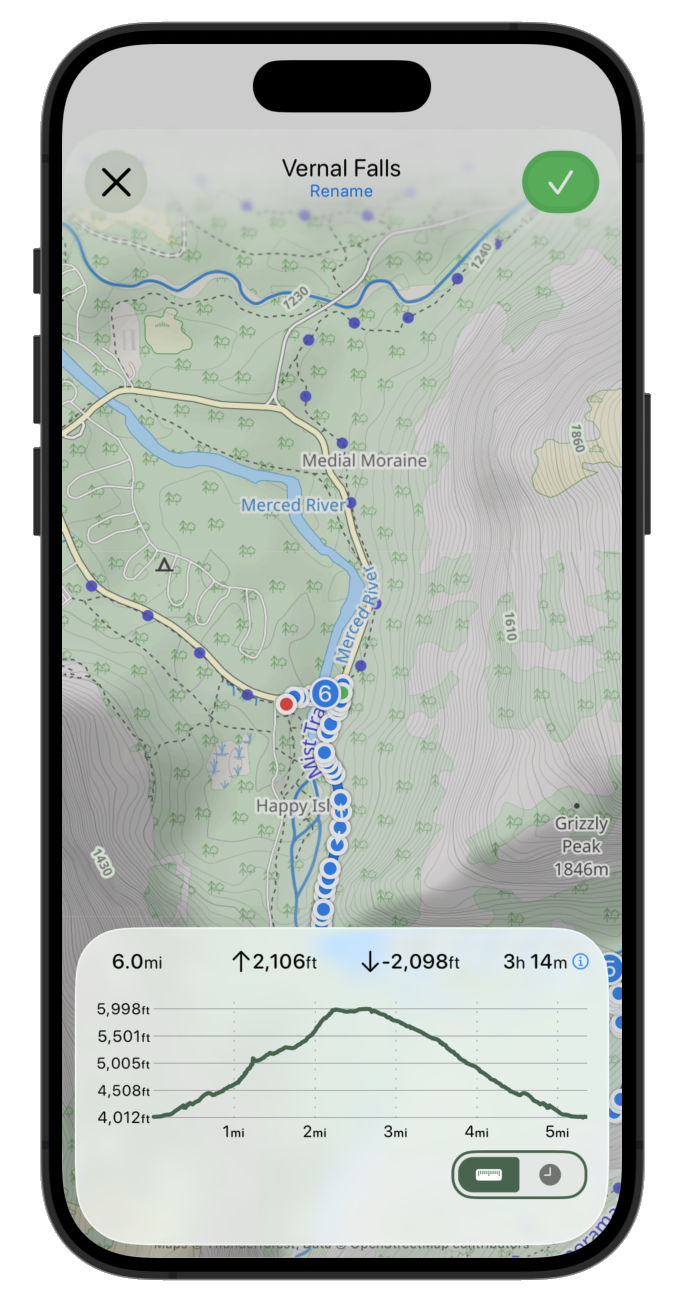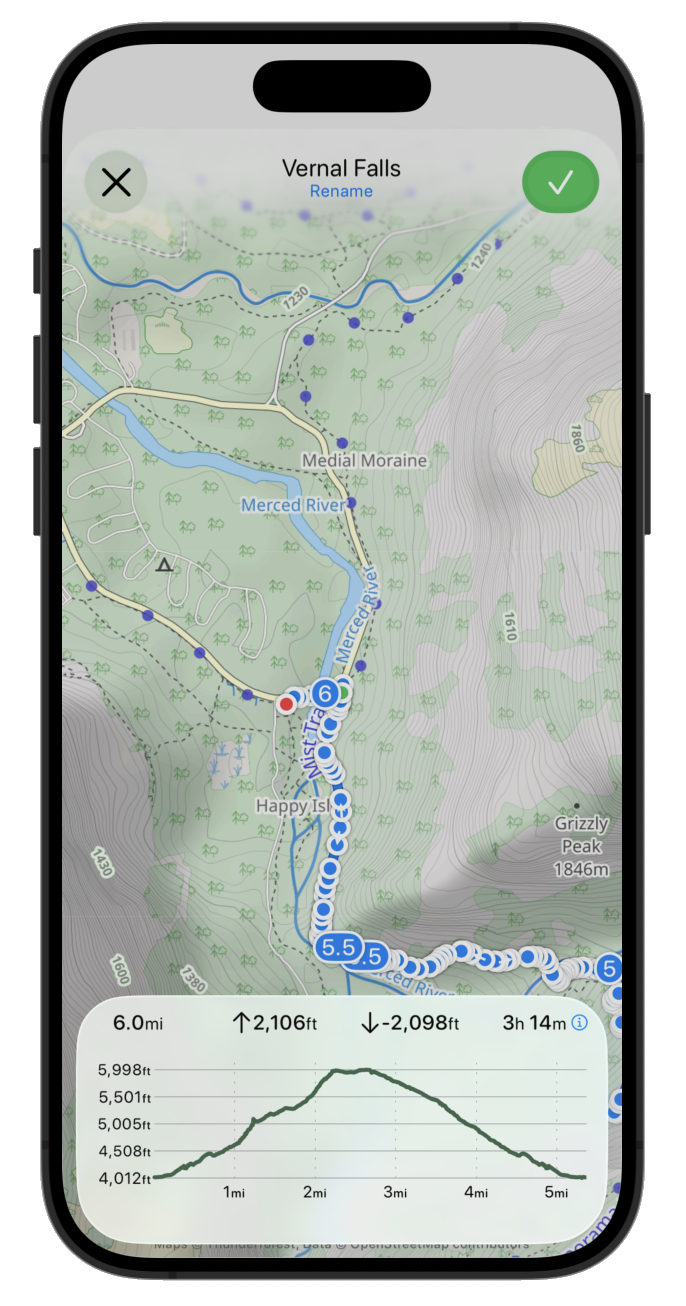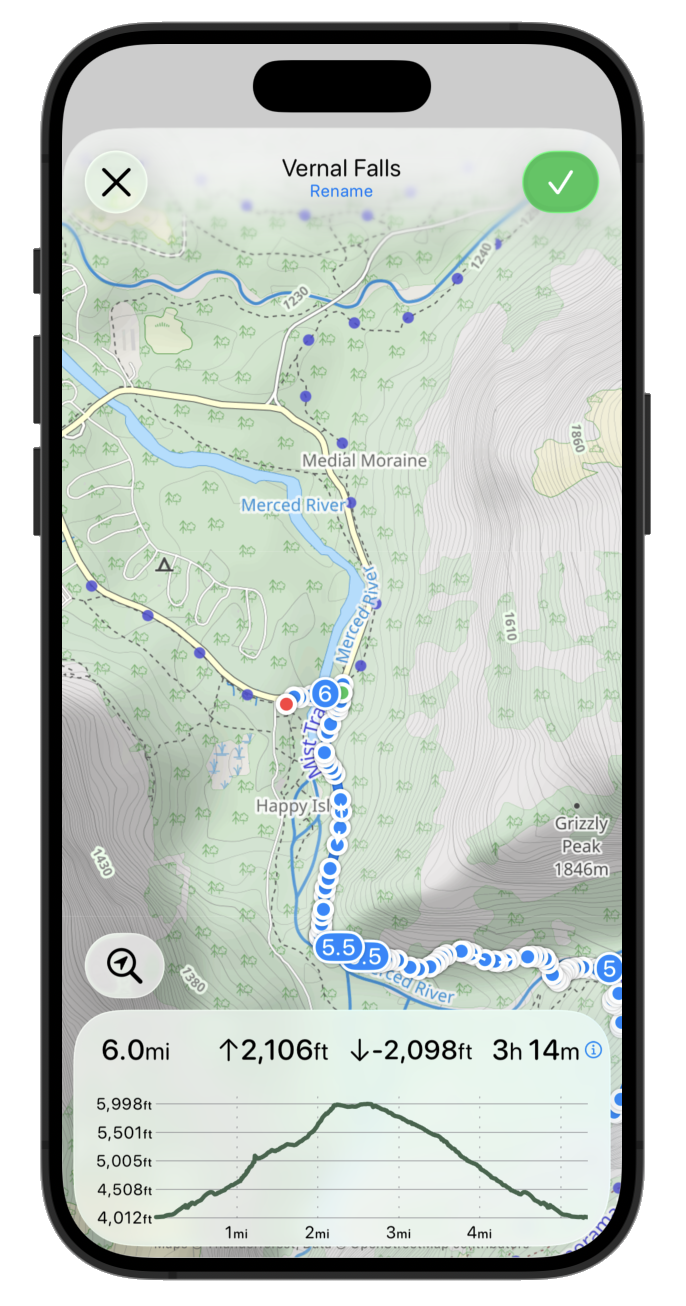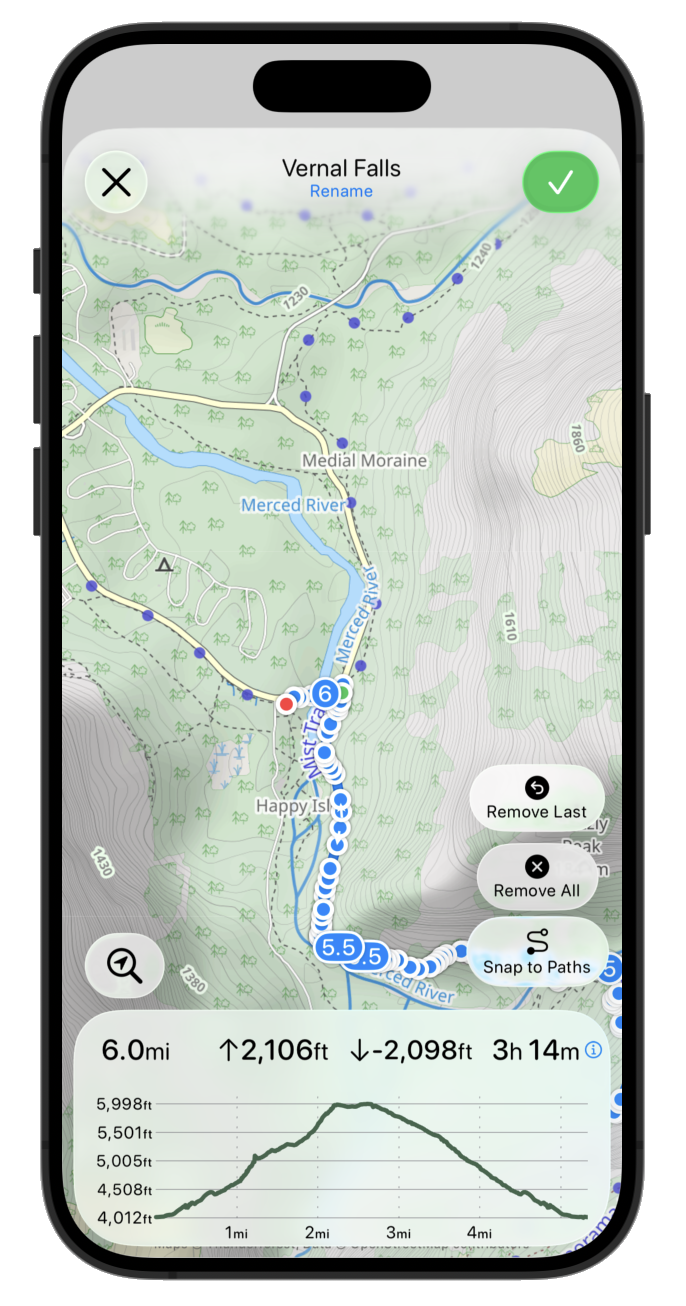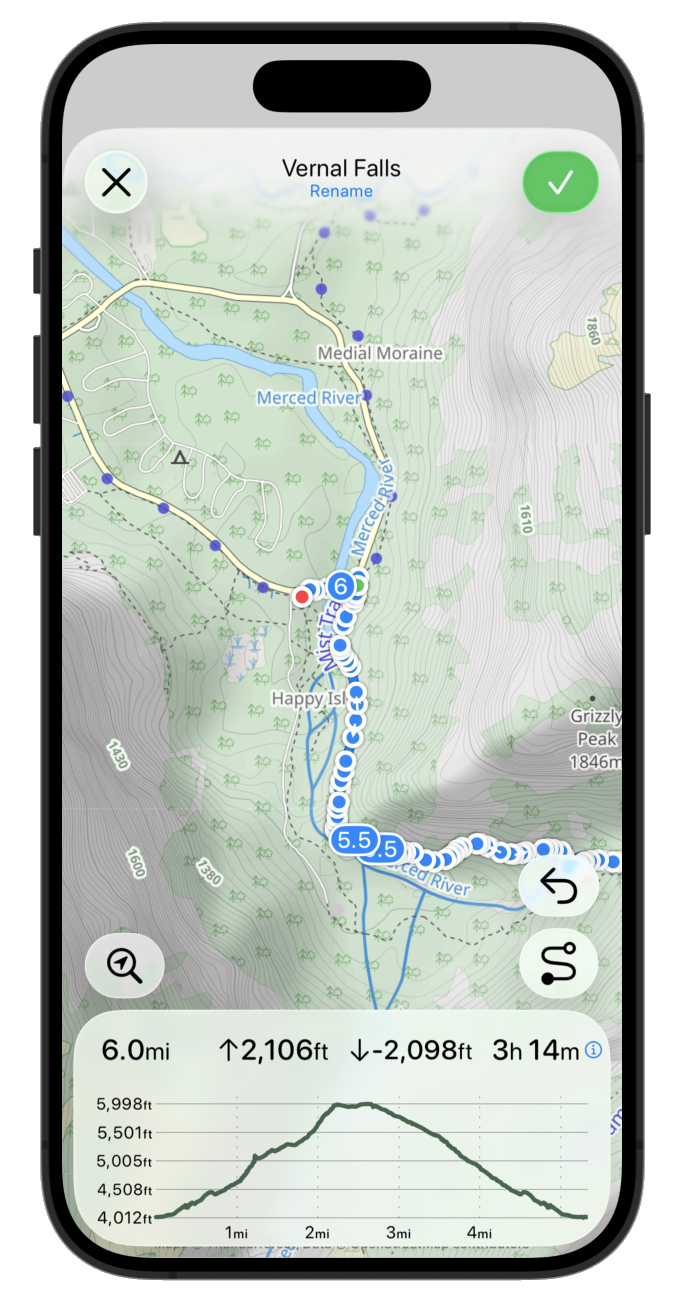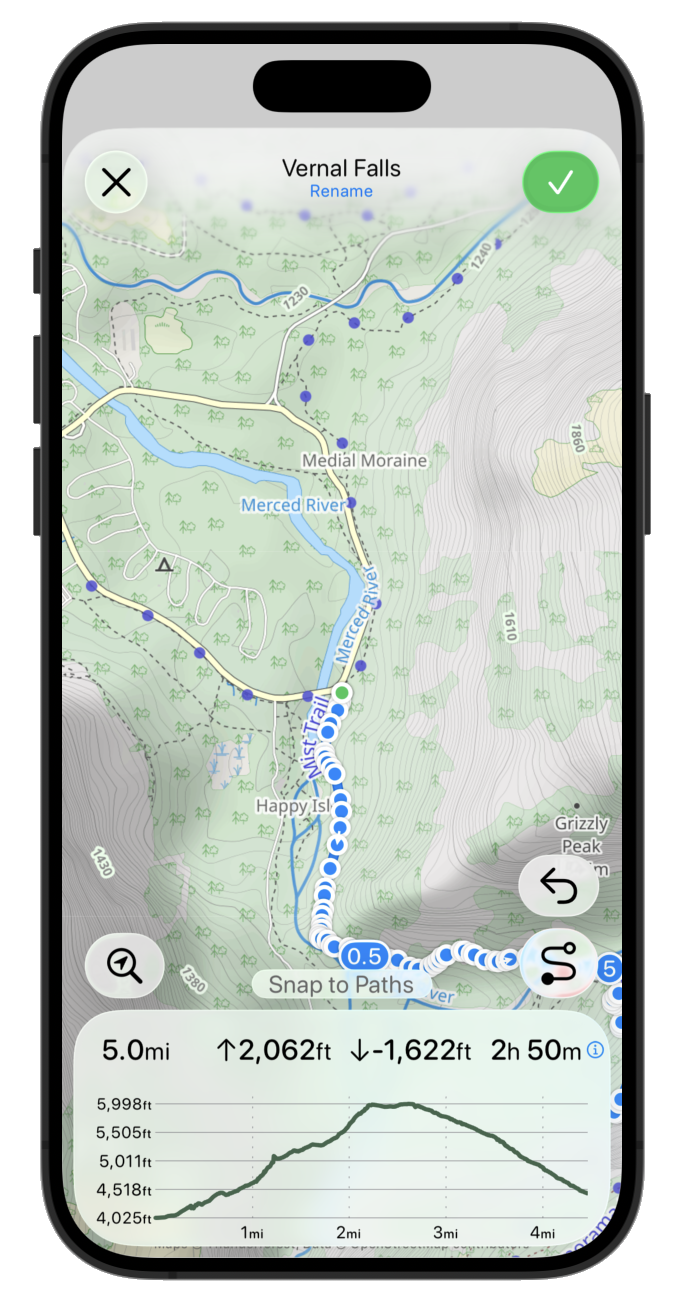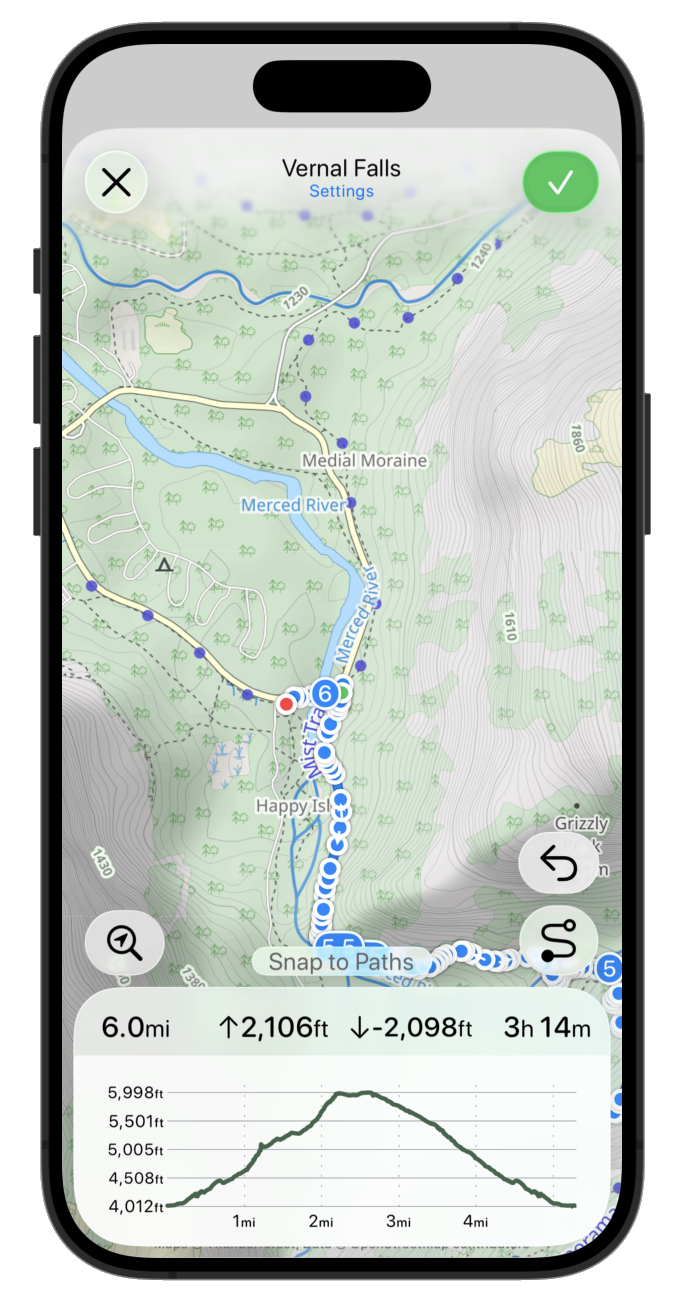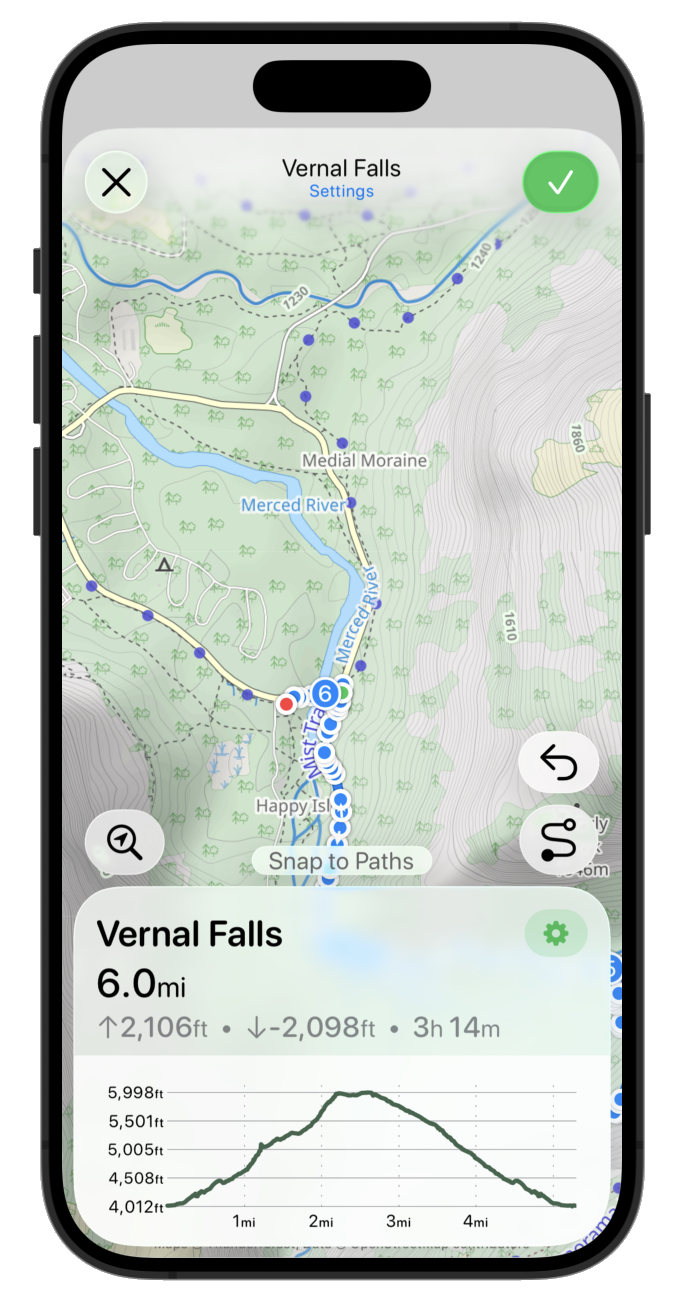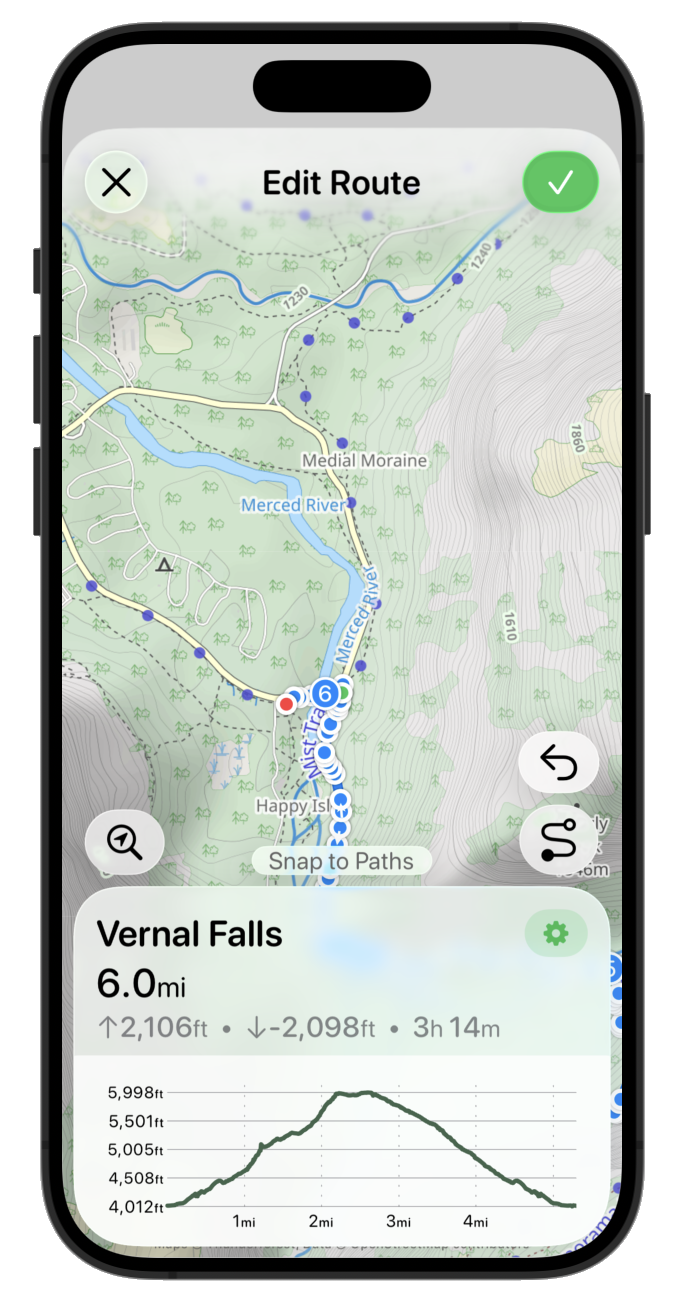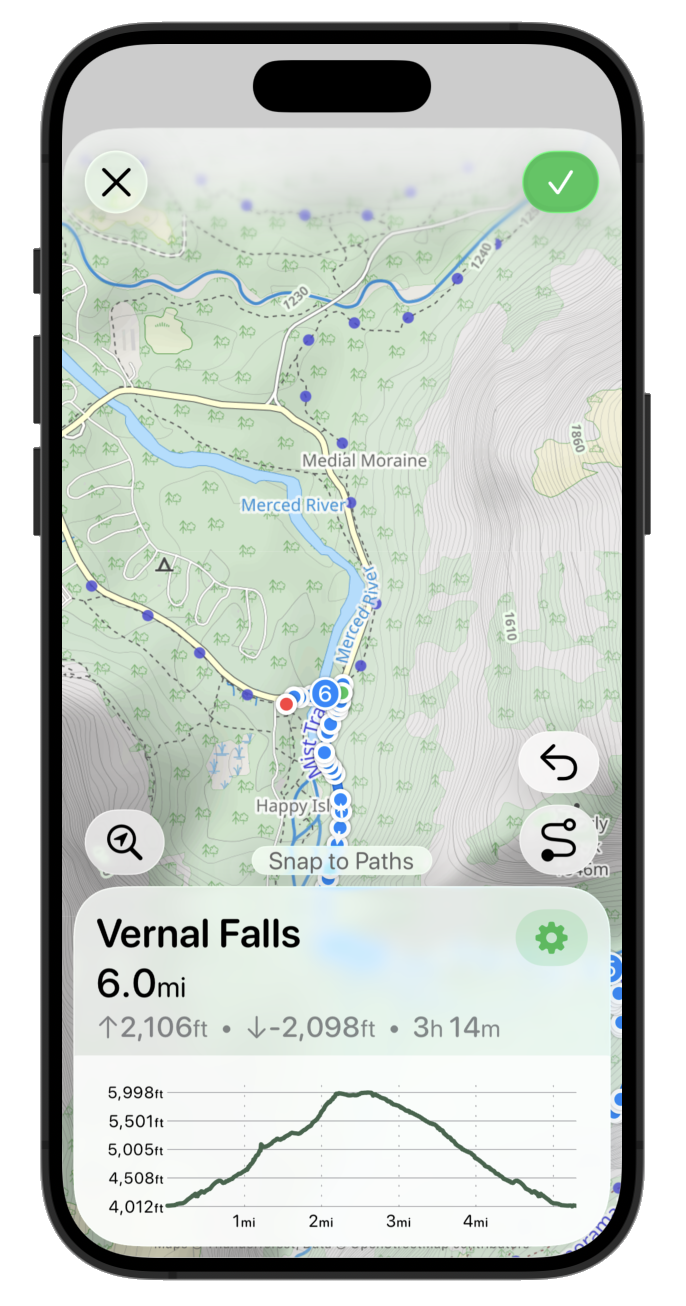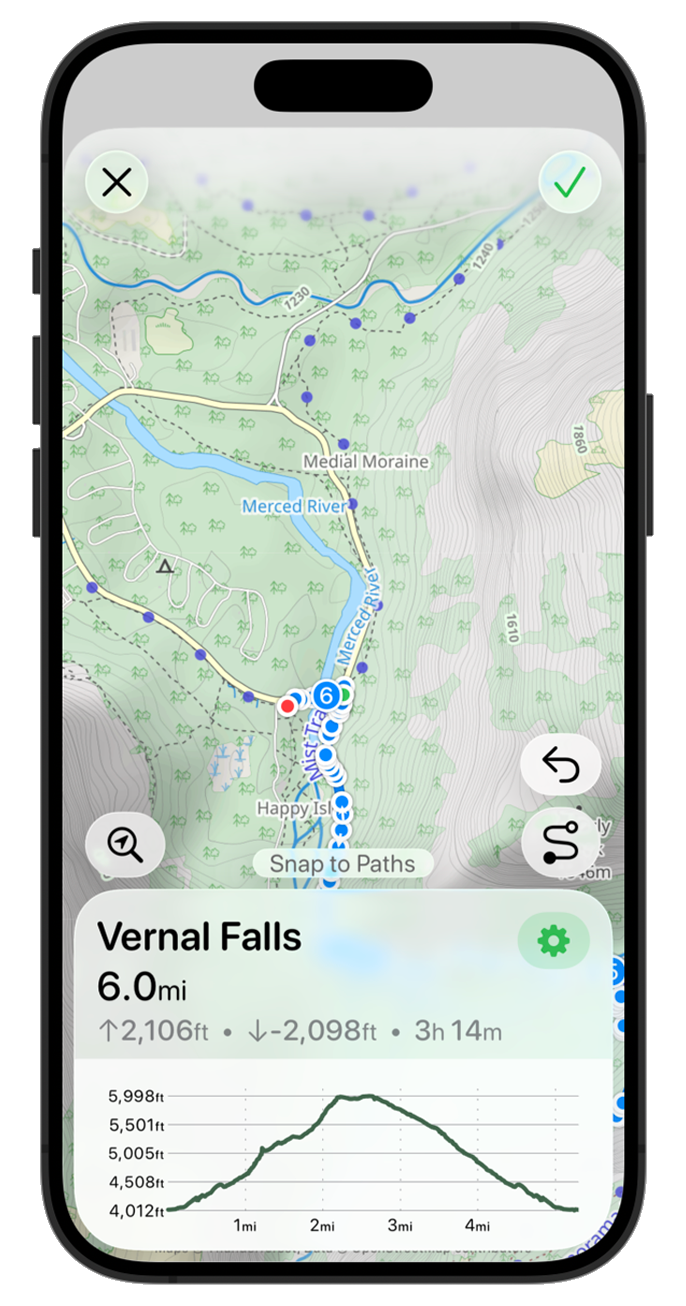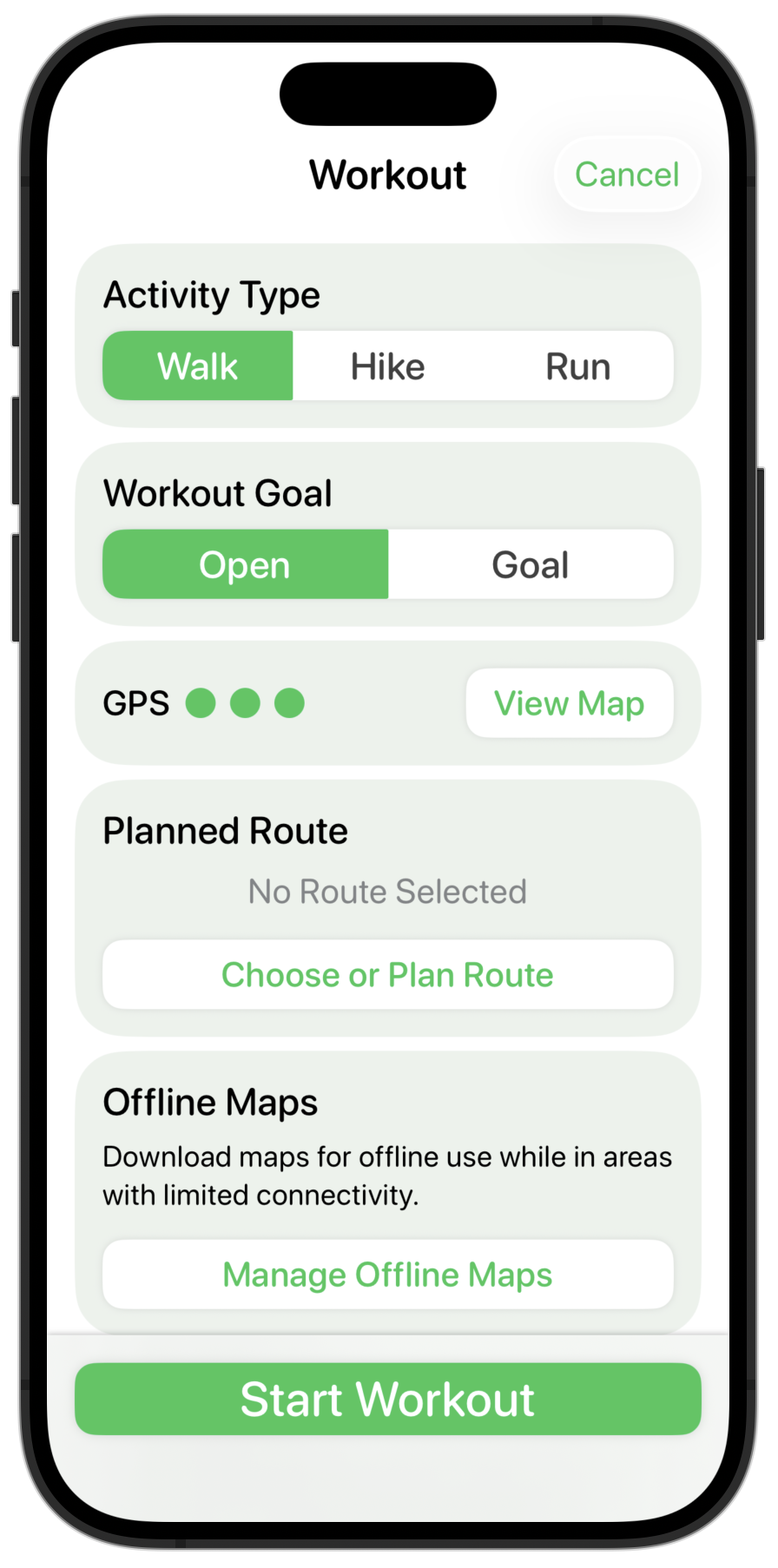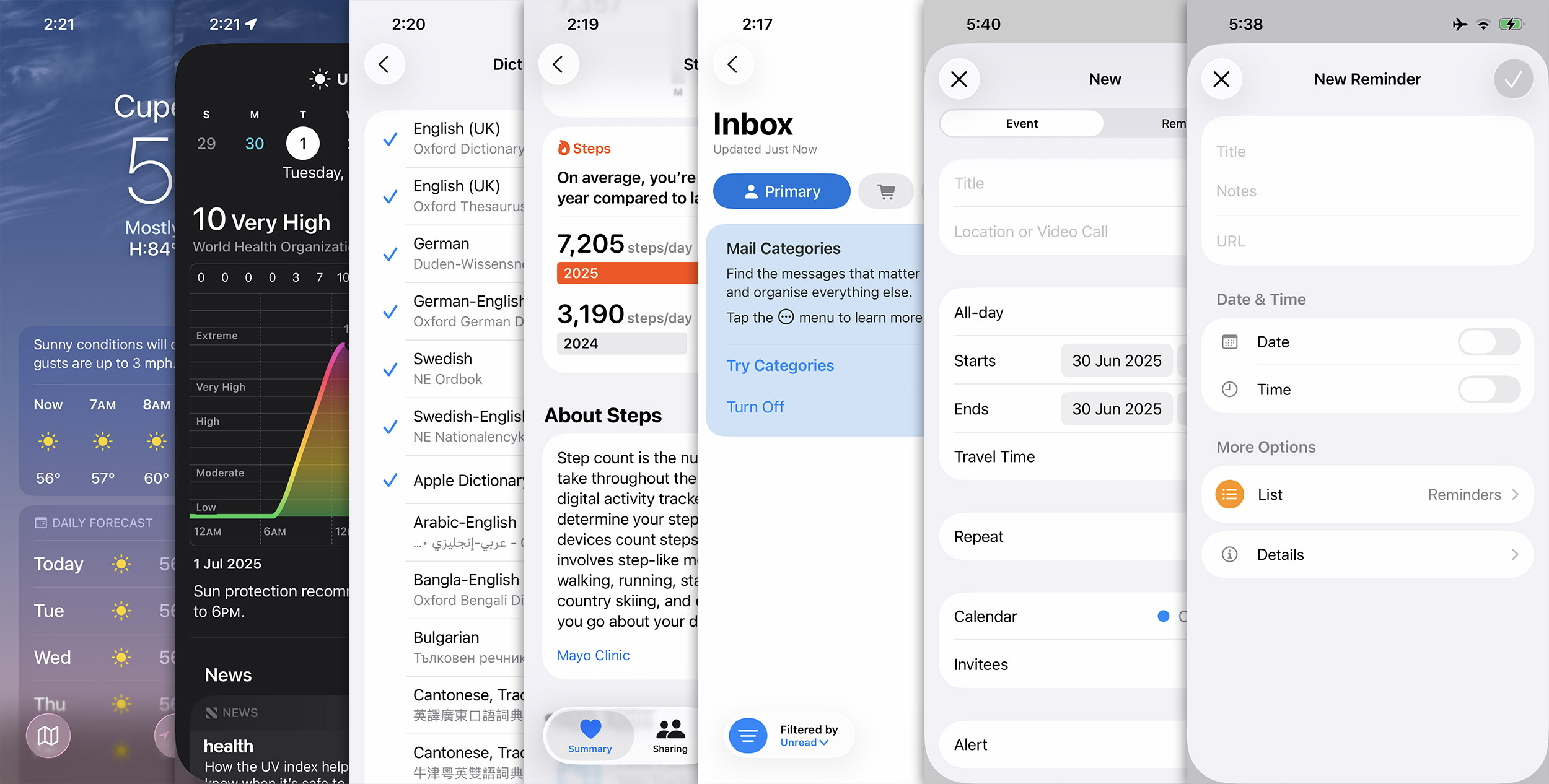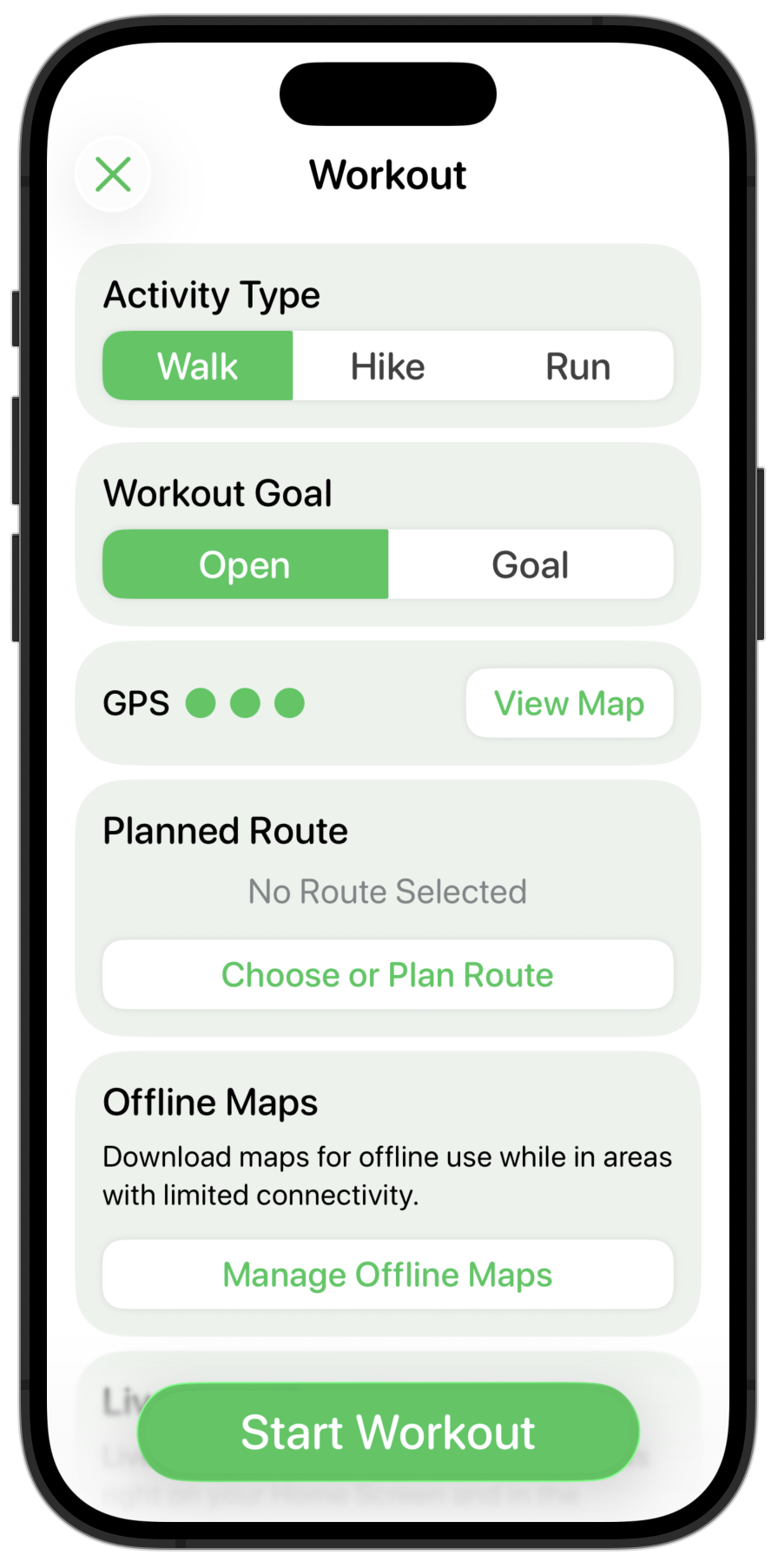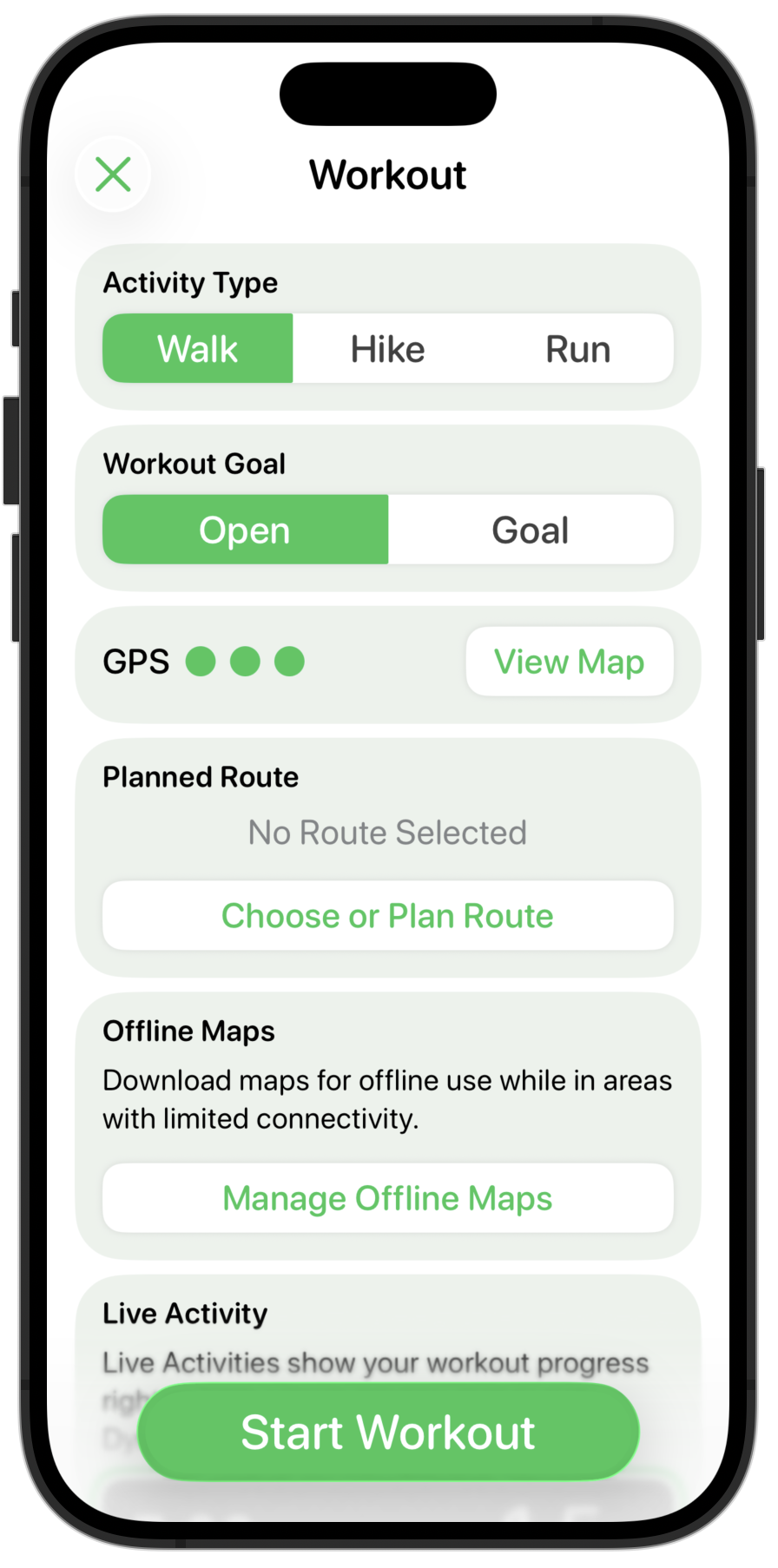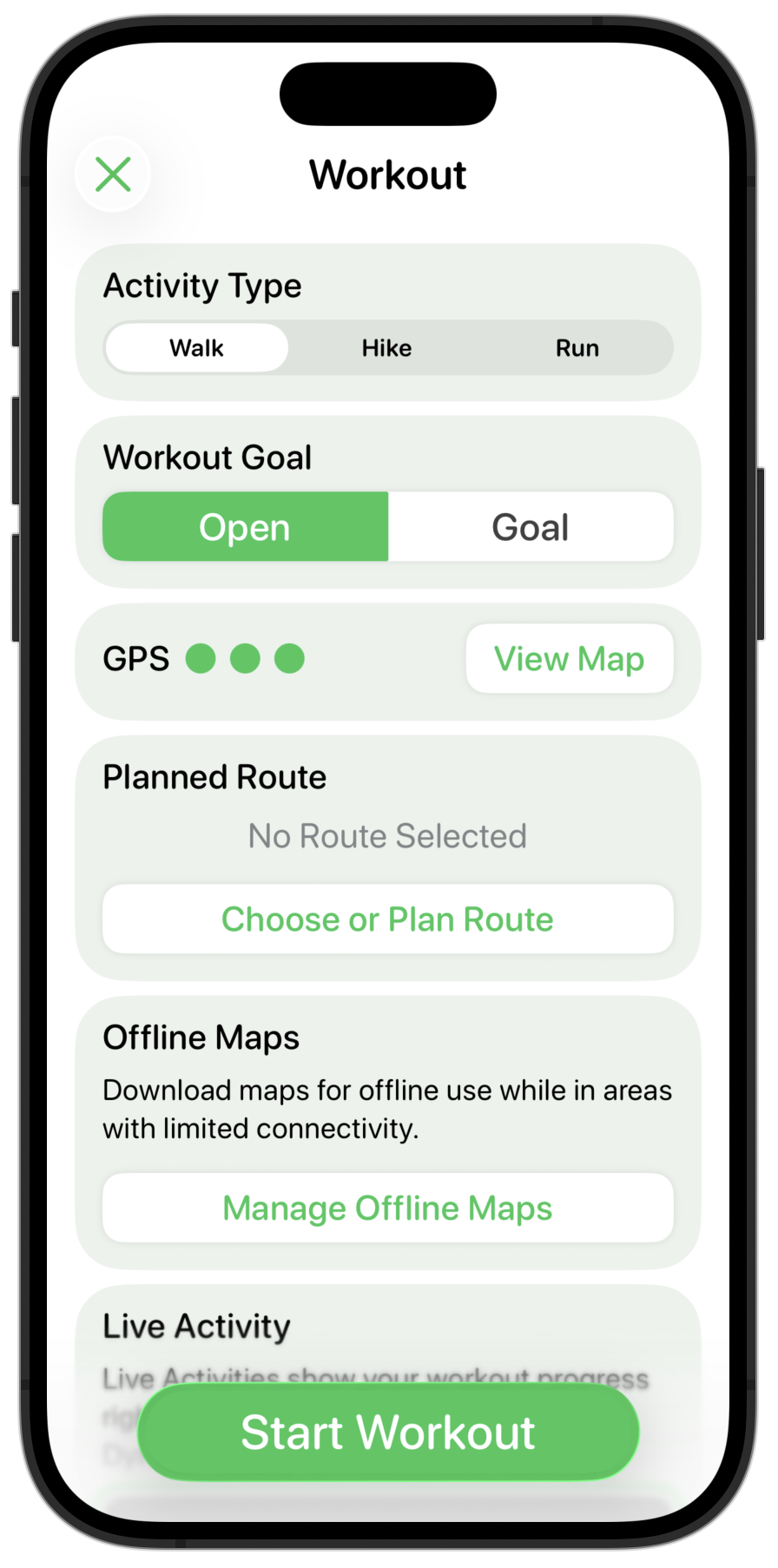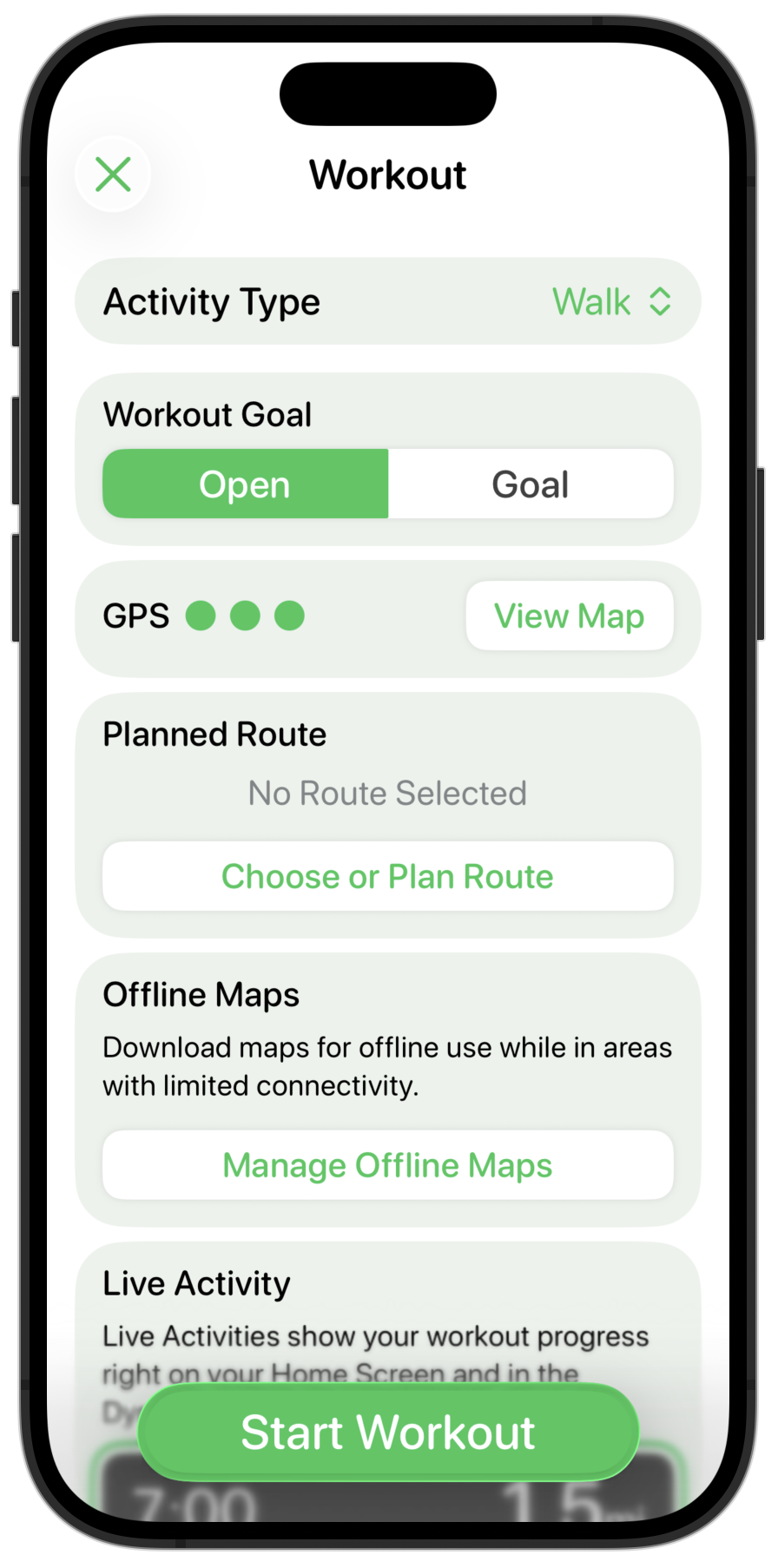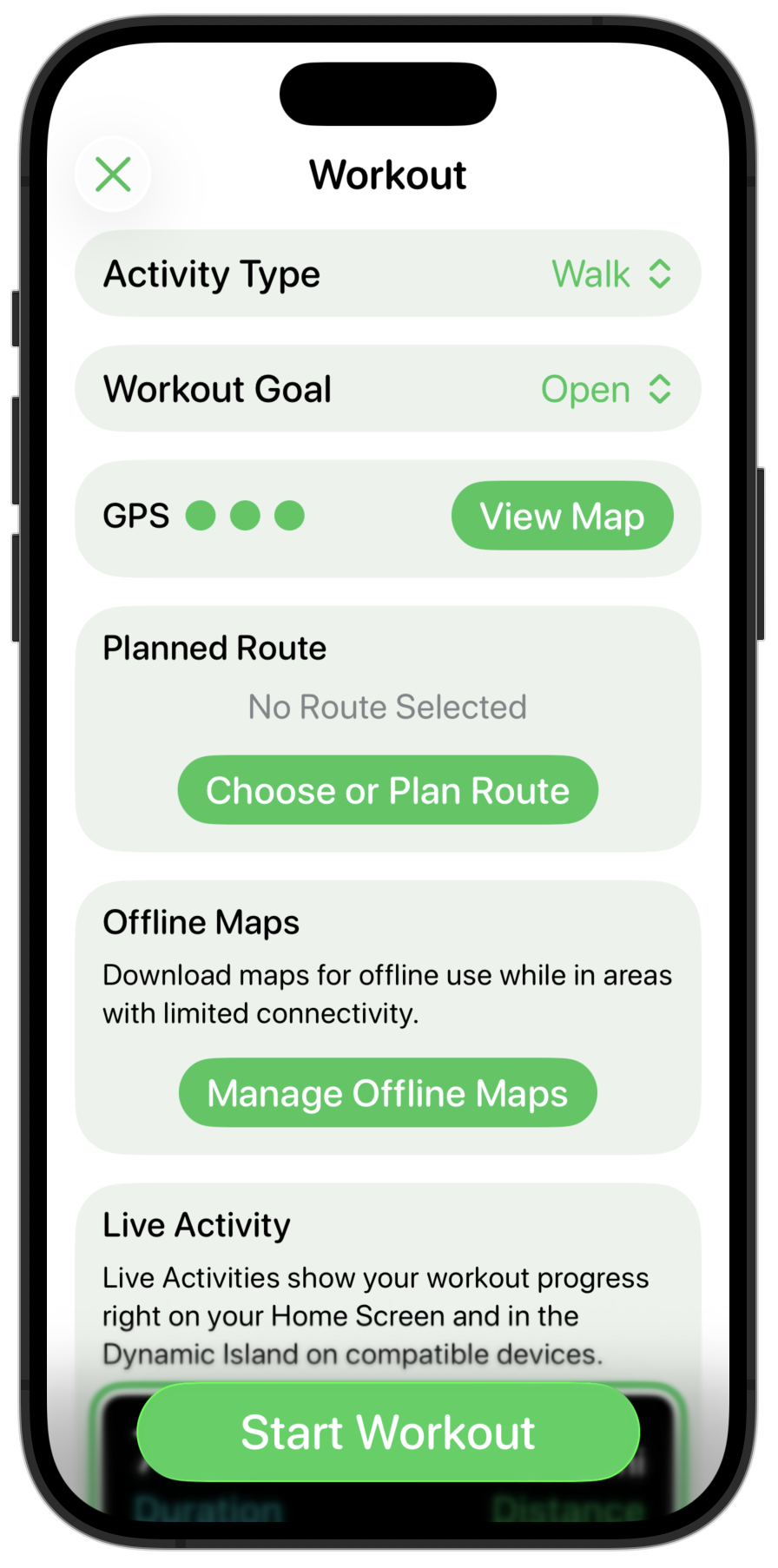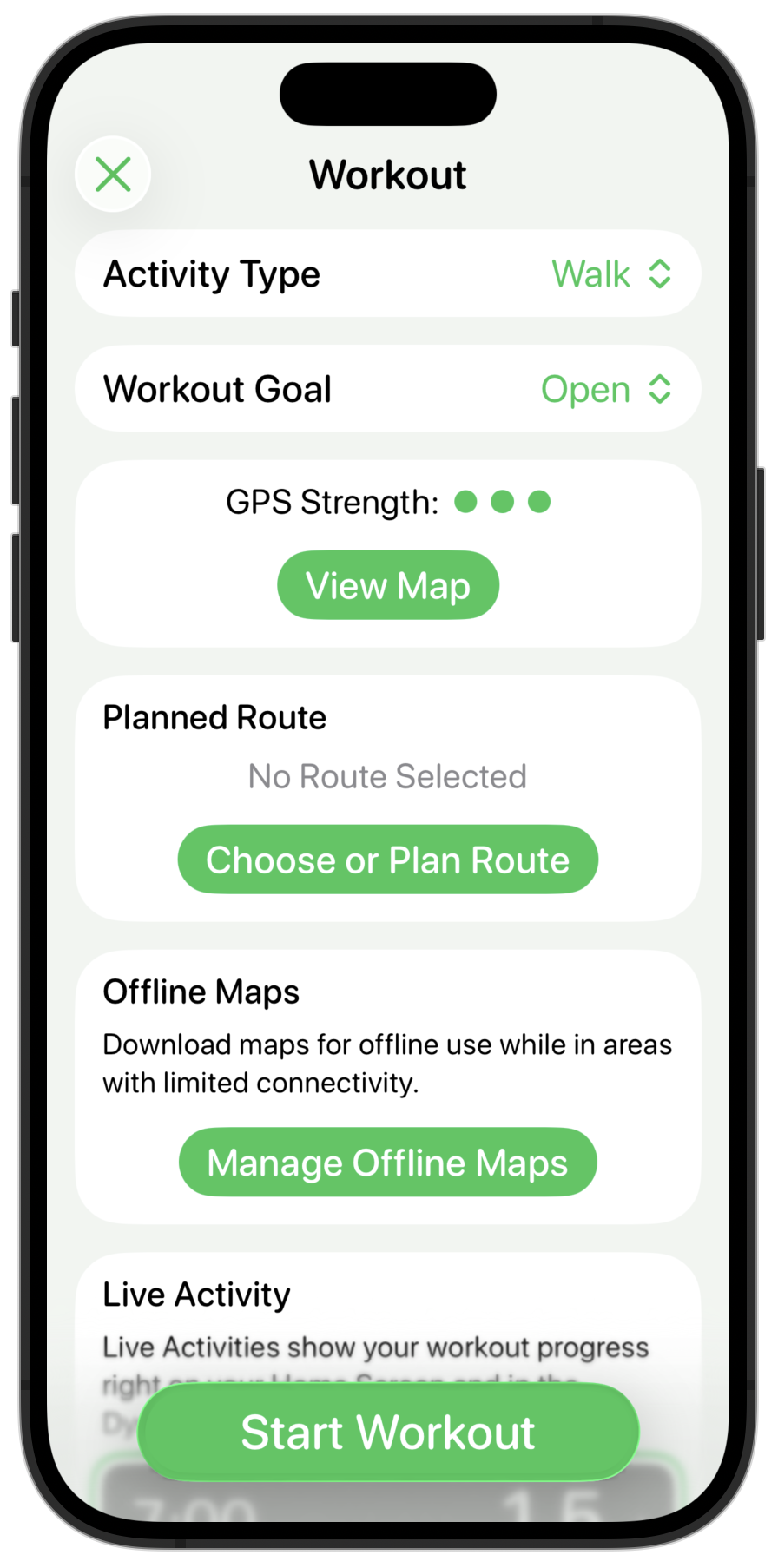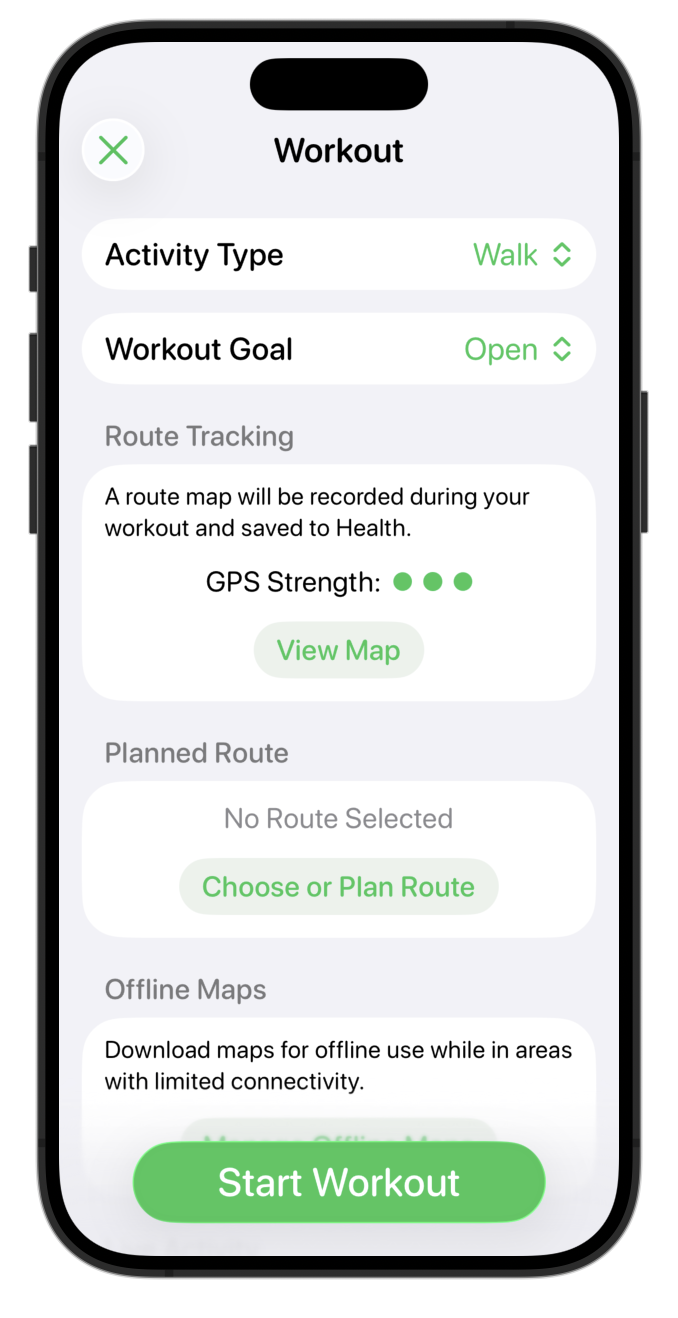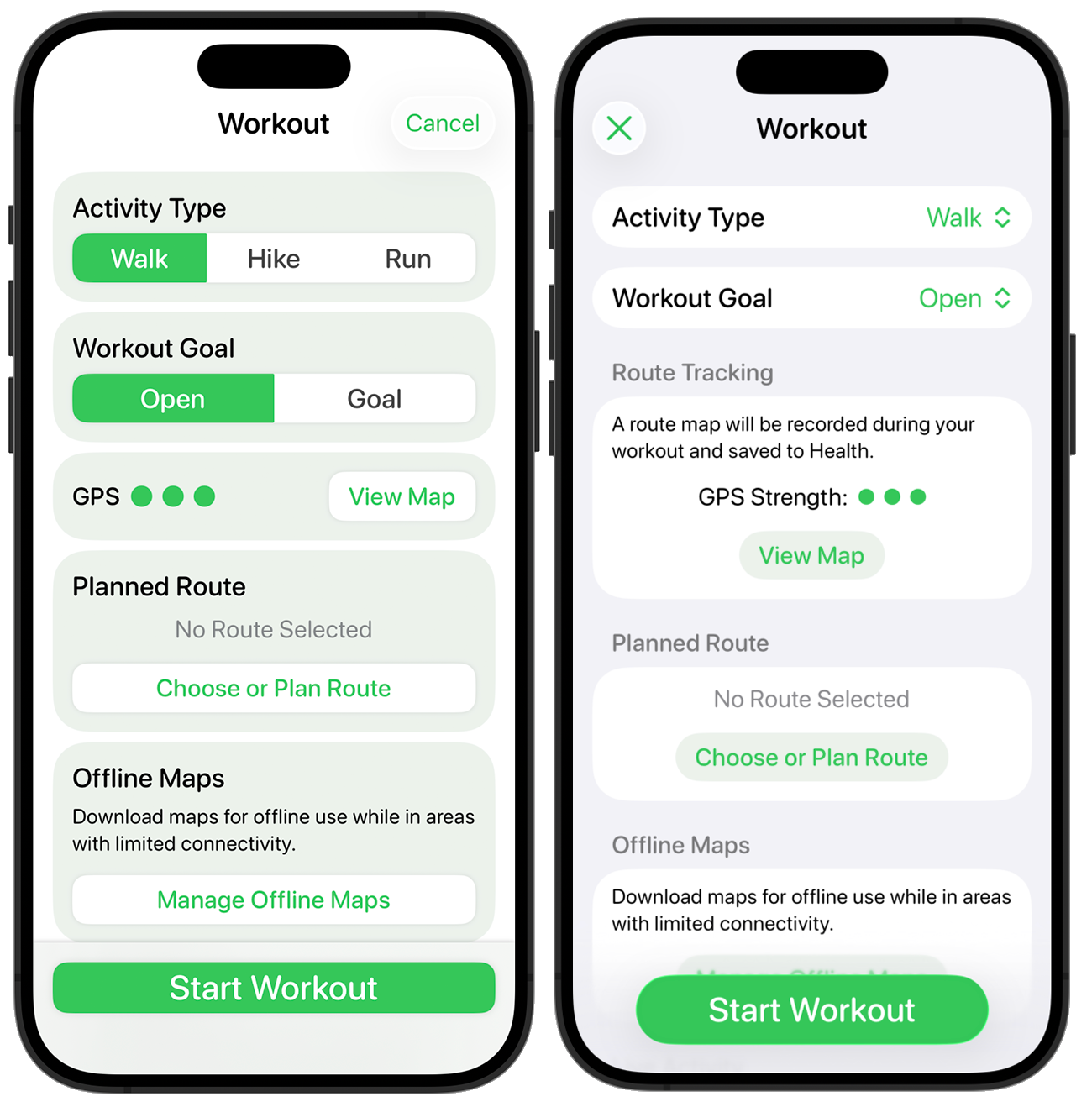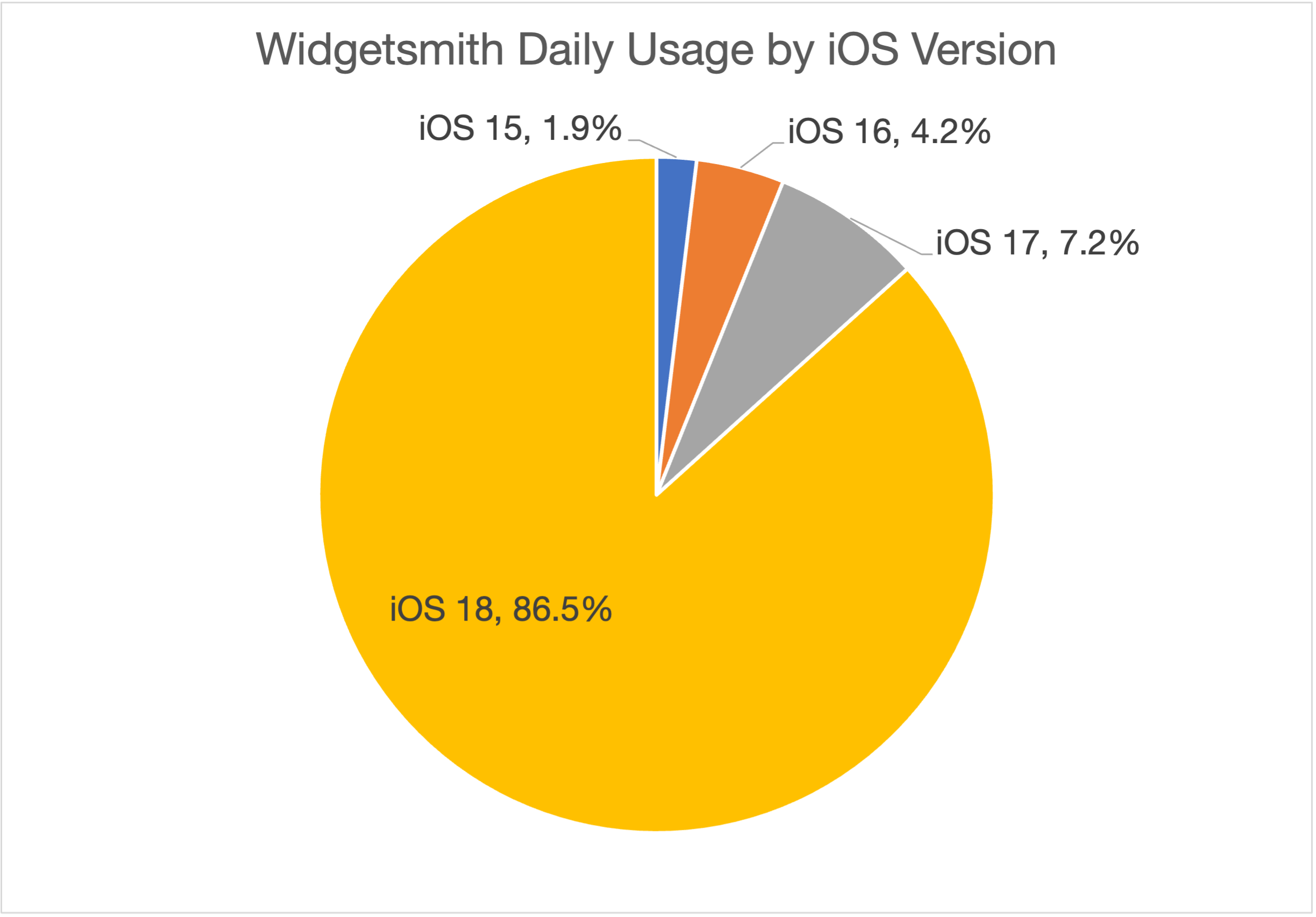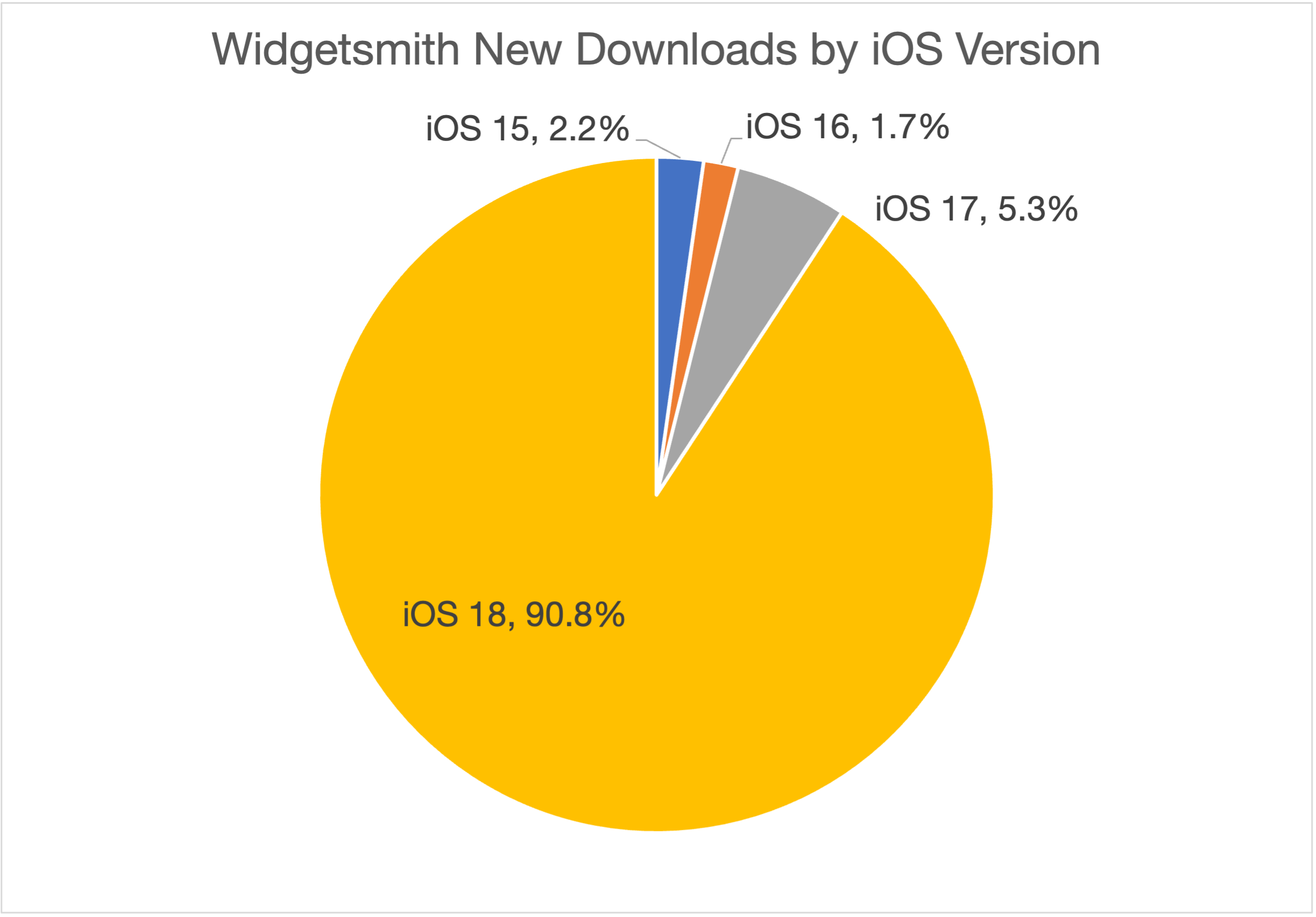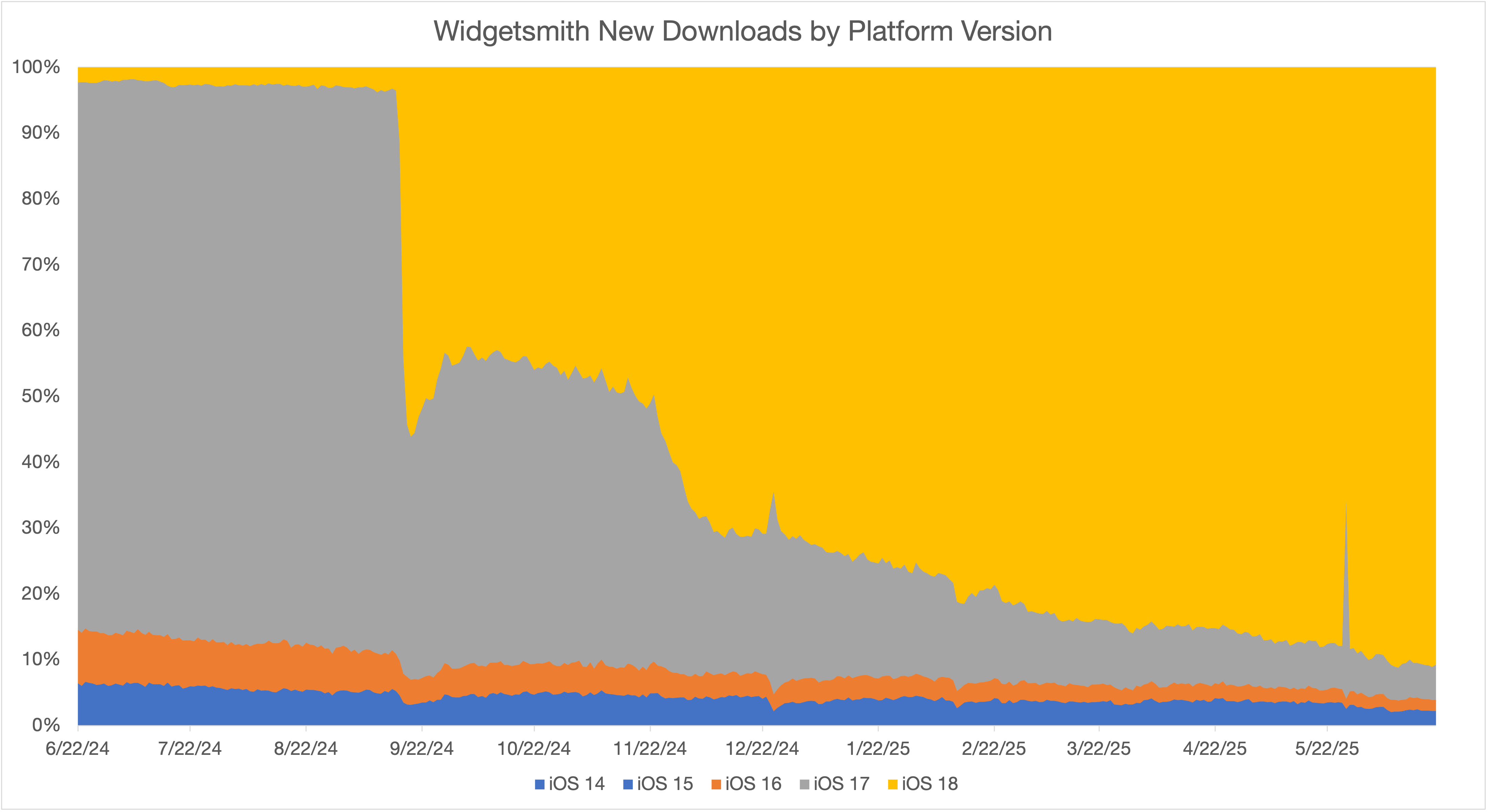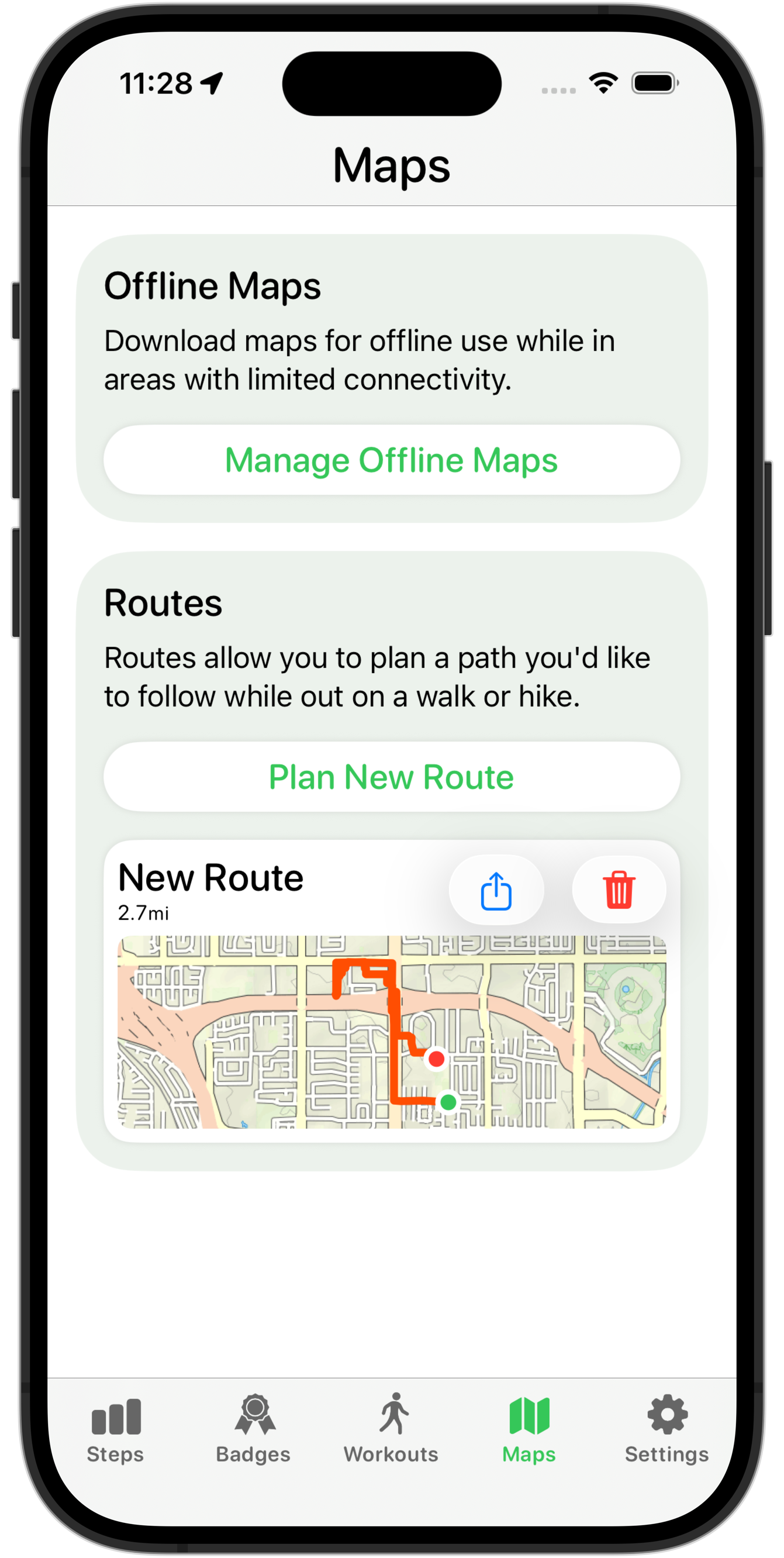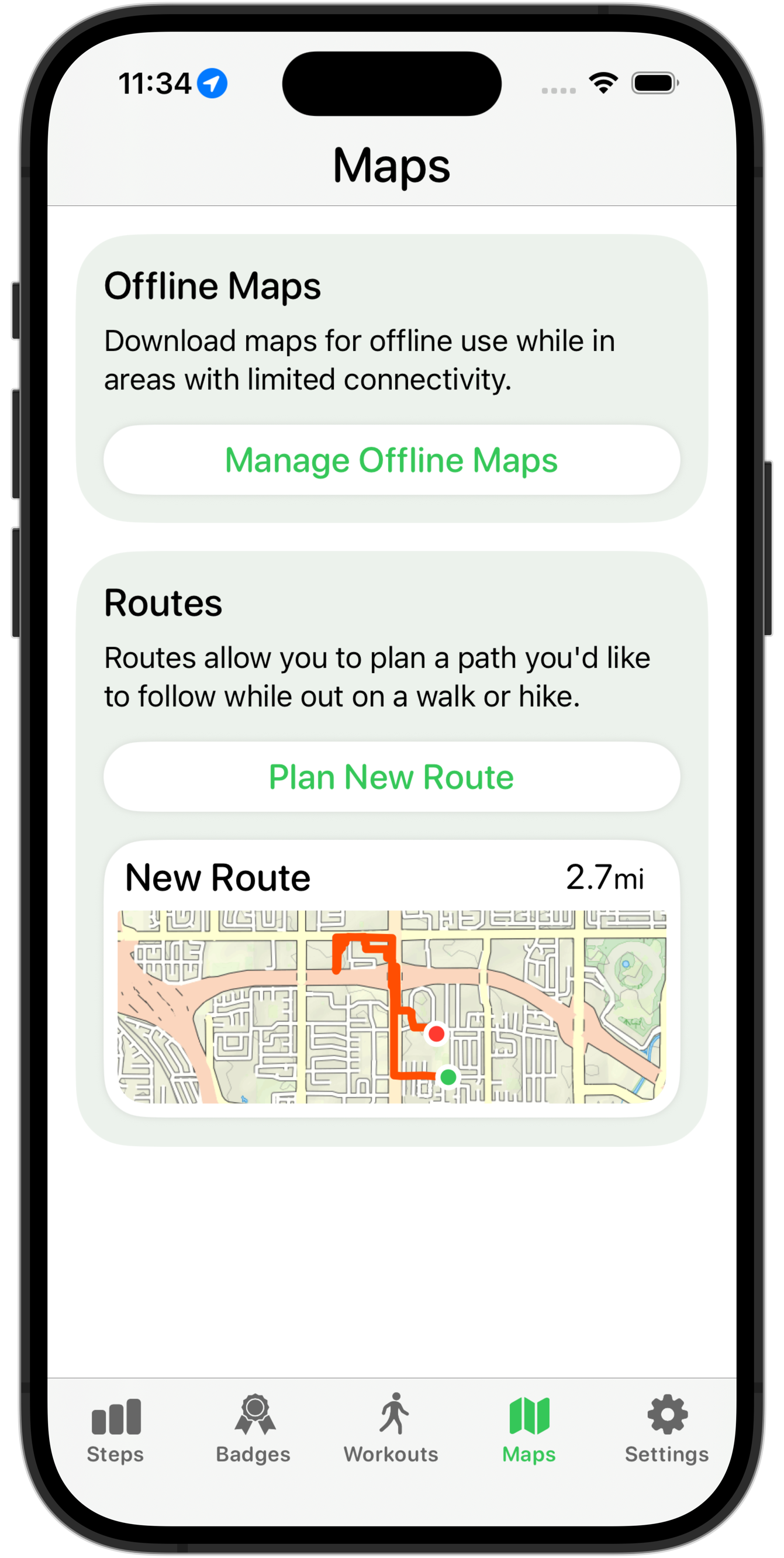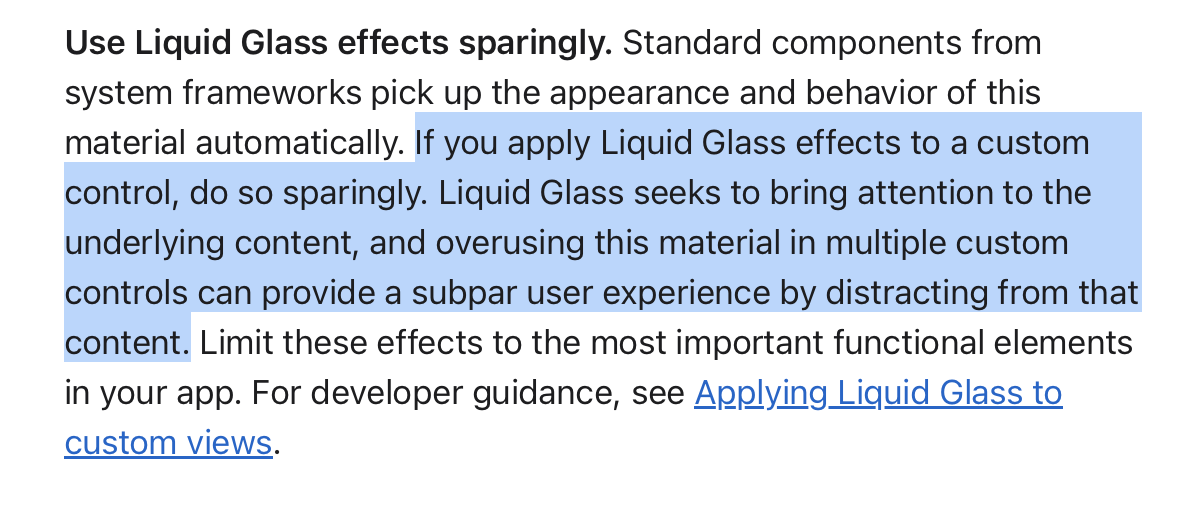Next up for my speed run of iOS 26 first draft redesigns is the main Home Screen of Pedometer++.
This one proved pretty straightforward, at least to get to the solid draft stage.
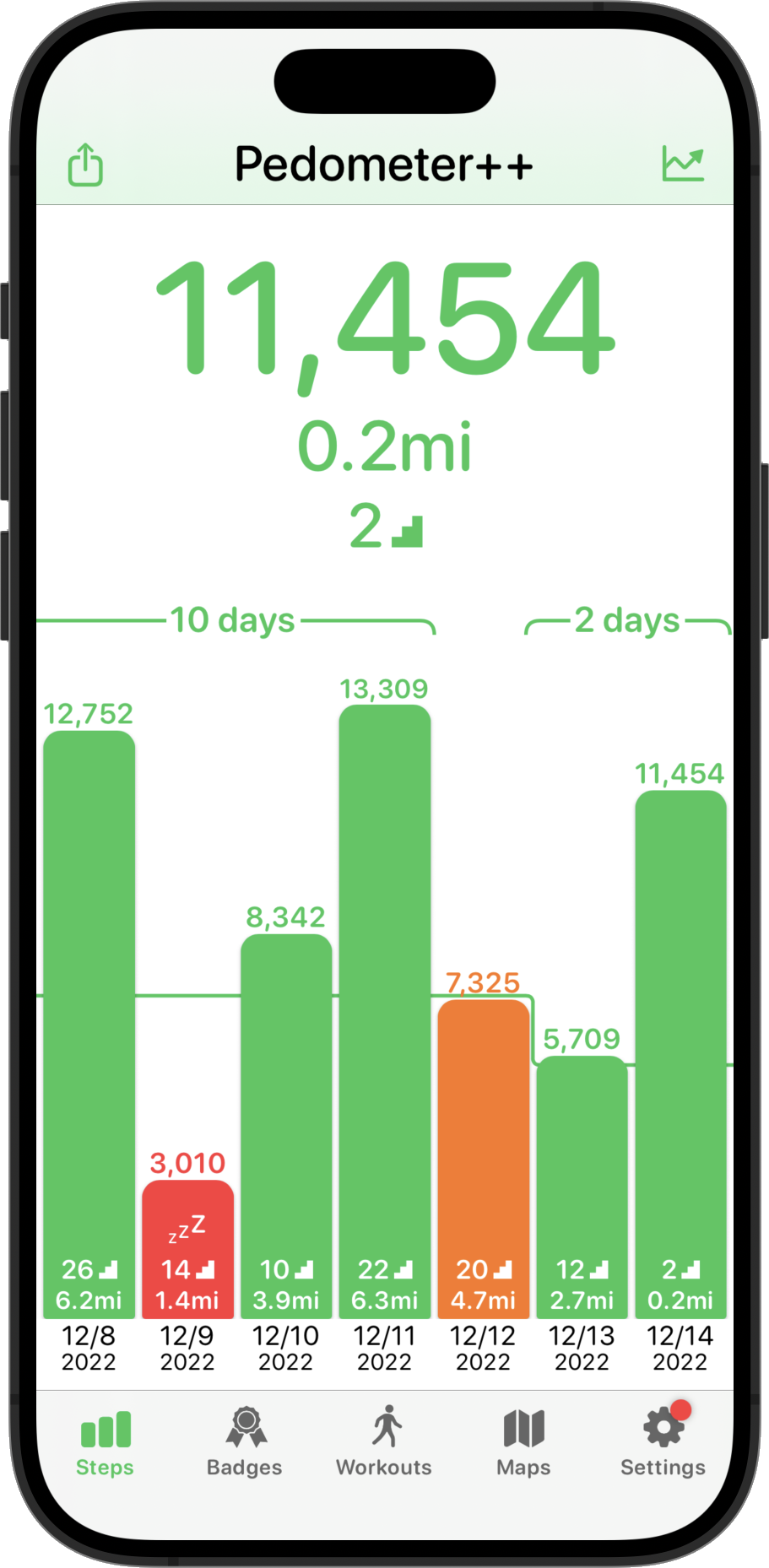
The initial step was to adopt the new Tab Bar design. Pedometer++ had previously used a completely custom tab bar control, which caused all manner of complexity and trouble. So this seems like the opportune time to switch back to the system one, especially since it is so glassy and a hallmark of the new look.
Similarly the top navigation bar buttons are adapted to the new button shapes and looks.
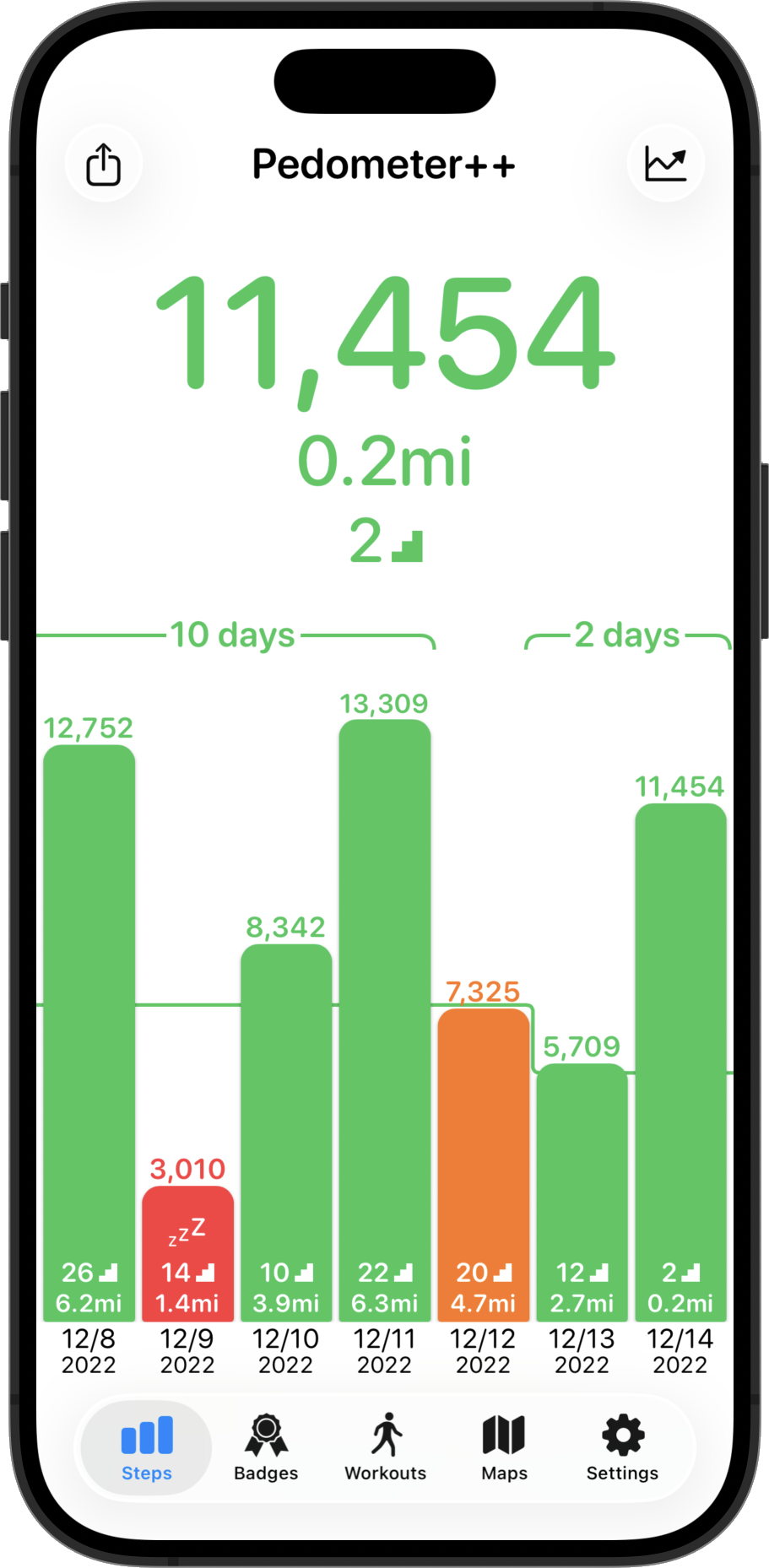
Note that the tab bar tint being blue is just an artifact of the way SwiftUI Previews work, in the app it is actually green.
Right away this is looking pretty much at home in the new design language. But there is something which bothers me a bit. All the empty white space feels a bit expansive in a less useful way. One of the features of the old design was that the top bar would tint based on your current day’s goal performance. I try to have visual clues and encouragements in the UI to help motivate you to reach your step goal.
So let’s try making the whole background rather than white, a tinted color matching the current goal state.
Here it is way overdone on purpose to show what I mean.
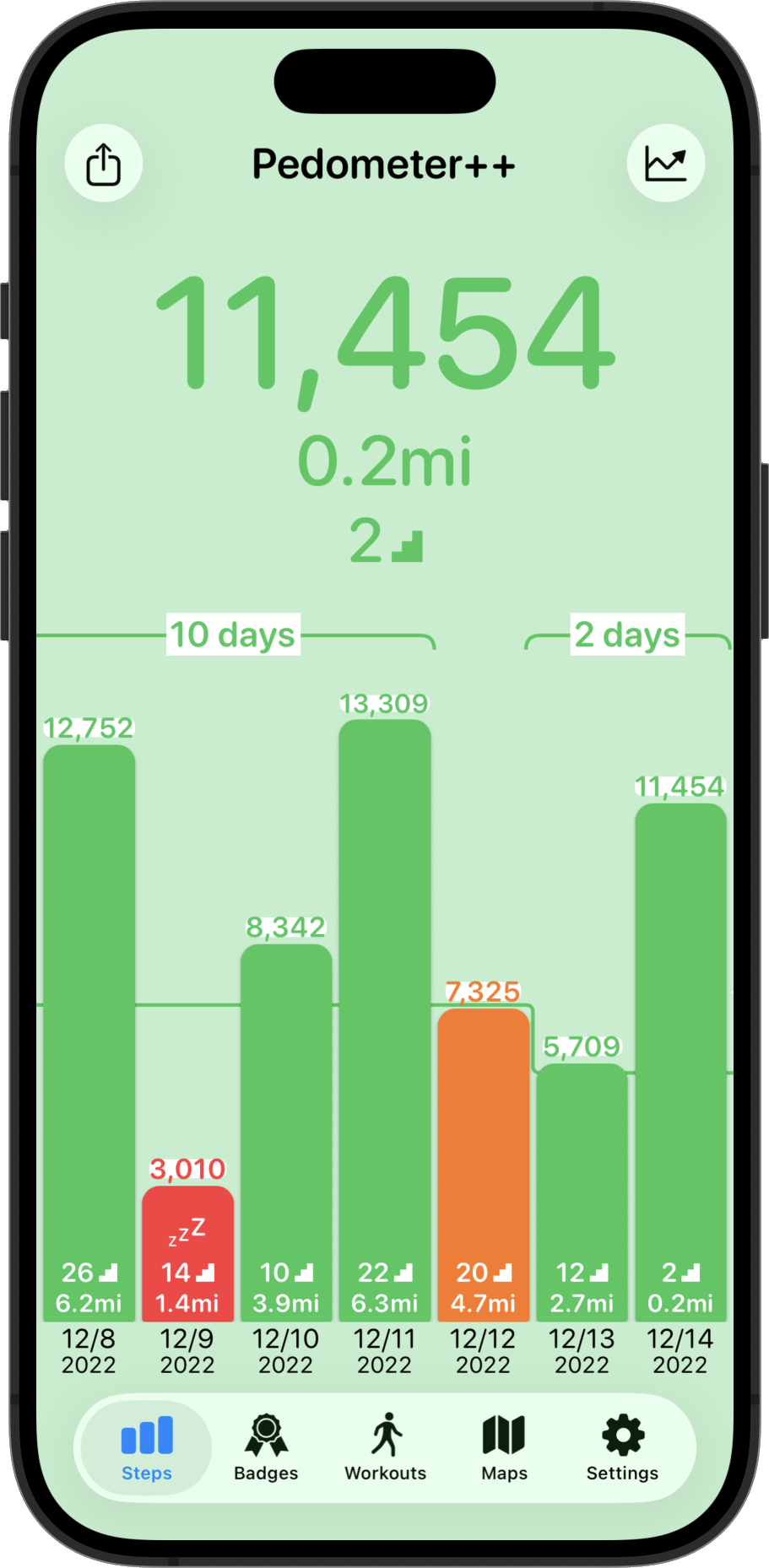
Or here it is adapted to each of the red, orange, green states at a more appropriate level of strength. I think that overall works better. Especially for the glassy controls, they seem to work really well against something which has some color. On completely white they drop a bit of their distinctiveness and are harder to quickly identify as buttons.
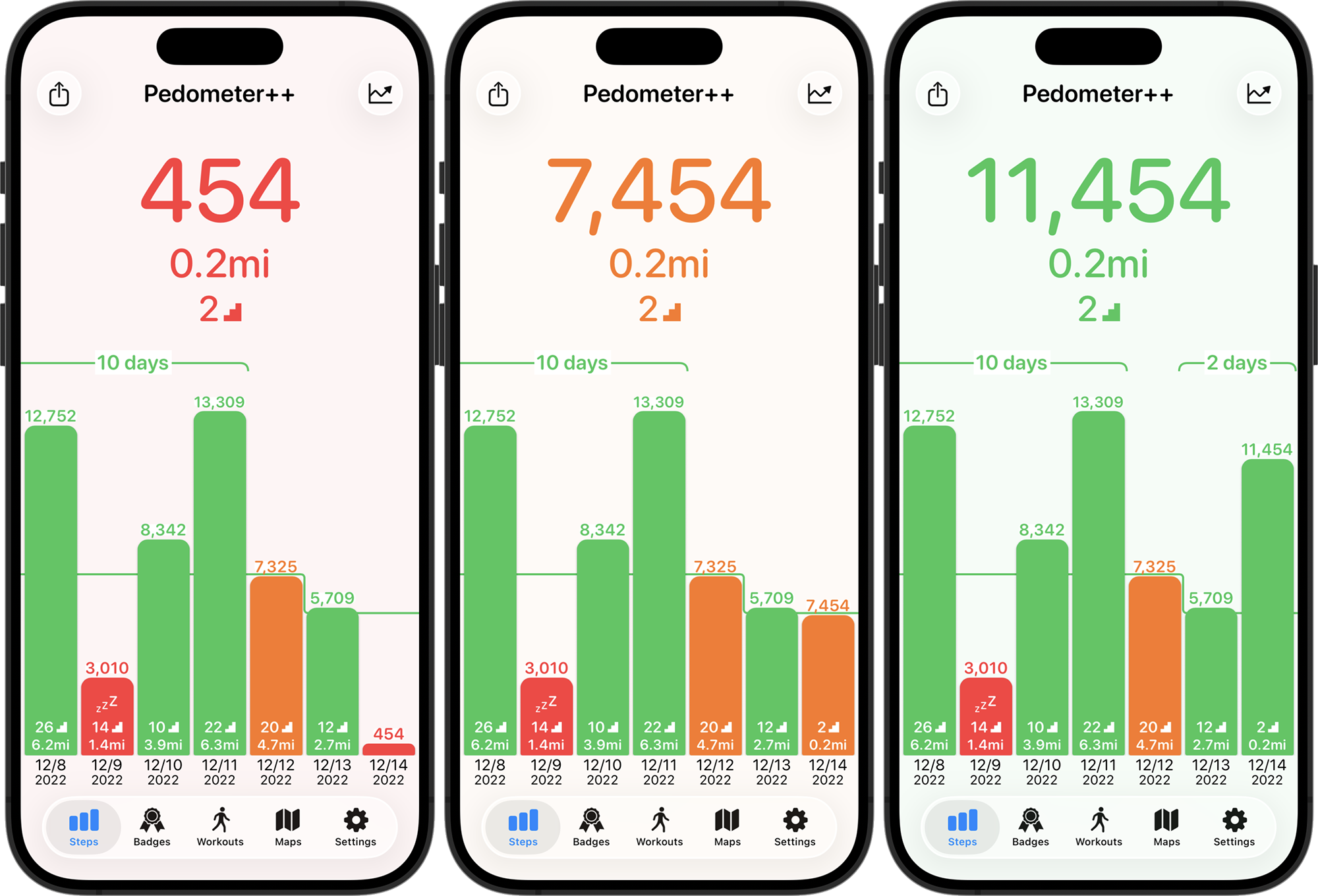
Lastly I just need to clean up the backgrounds of a few of the views which were previously assuming a white background and so now look a bit weird (like in the streak length marker label). Also, I think the title text needs to be a bit bigger to better balance with the button sizes.
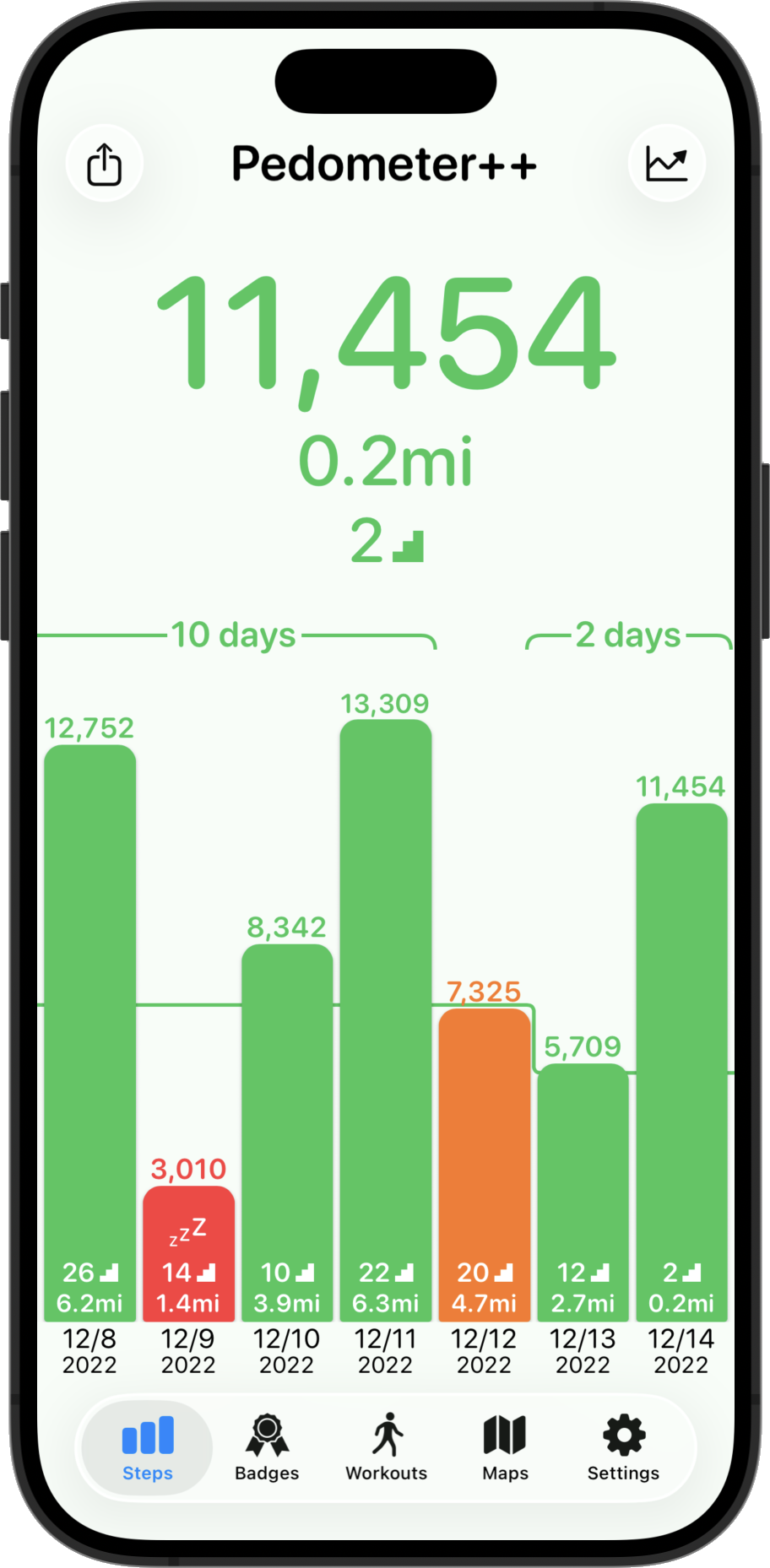
That’s pretty solid. I like it, it feels ‘new’ but not in a way which I think will cause confusion or complaint. This root screen is the heart of Pedometer++, and has been very similar for nearly 10 years now. I want to be very conservative with updating it, so as not to cause customer frustration.
Here is a before and after:
